One of the most underrated mushrooms, the Dryad's saddle (Cerioporus squamosus, formerly known as Polyporus squamosus) is an edible mushroom with a pattern on the top of the cap that resembles pheasant feathers, hence the common name pheasant back. Pheasant tail mushrooms and saddle mushroom are two other common names.
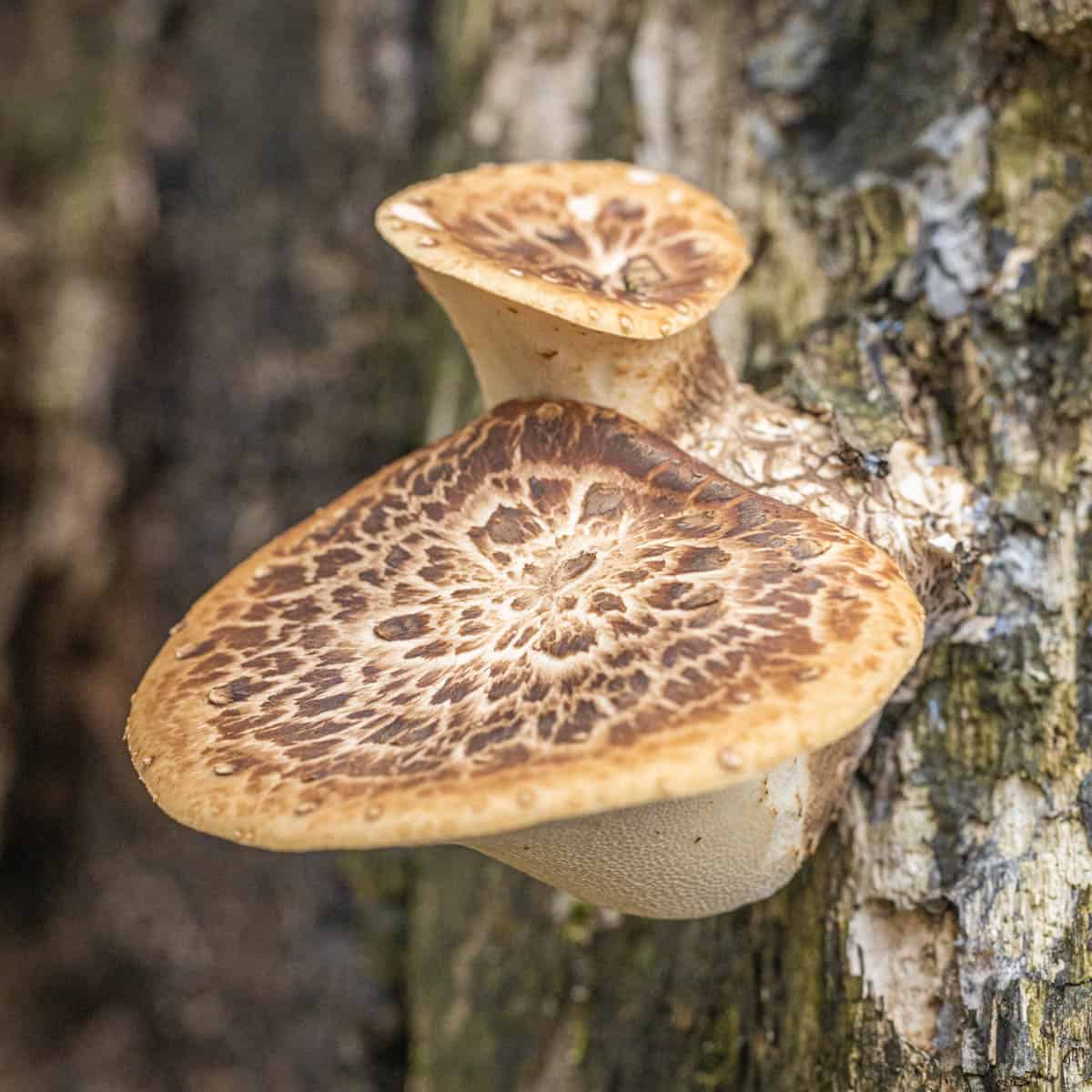
Some people don't care for the taste, but these mushrooms make a good consolation prize when morels are scarce. And, although they're not worth as much as morels they're often sold to restaurants. The market price of pheasant backs is $10-20 / lb depending on quality.
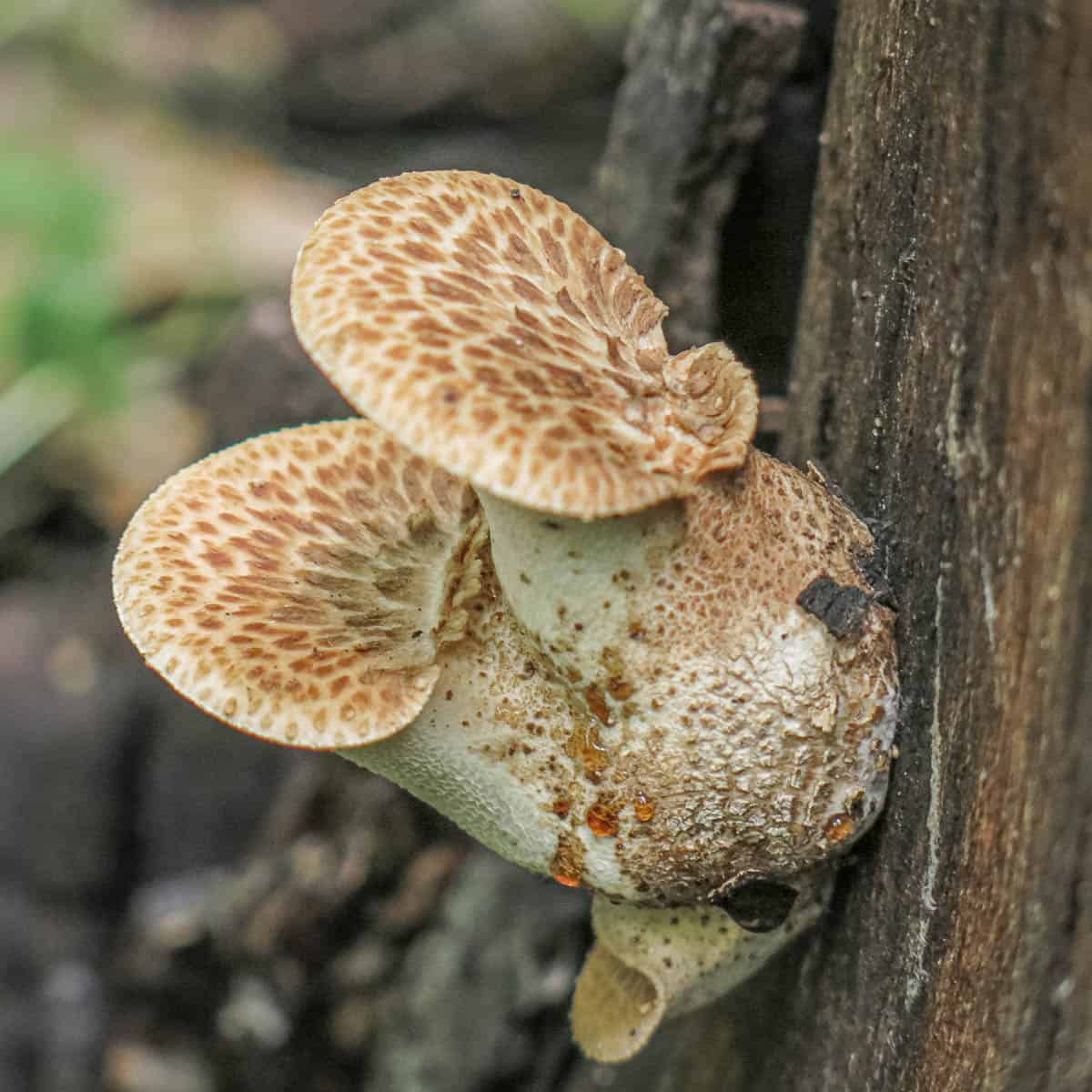
Very young dryad saddles showing the speckled, feather-like pattern on the cap.
Table of Contents
Pheasant Back Mushroom Identification
Identifying a pheasant back mushroom is easy. These are polypore mushrooms like chicken of the woods and hen of the woods, with honeycomb-shaped pores under the cap instead of gills.
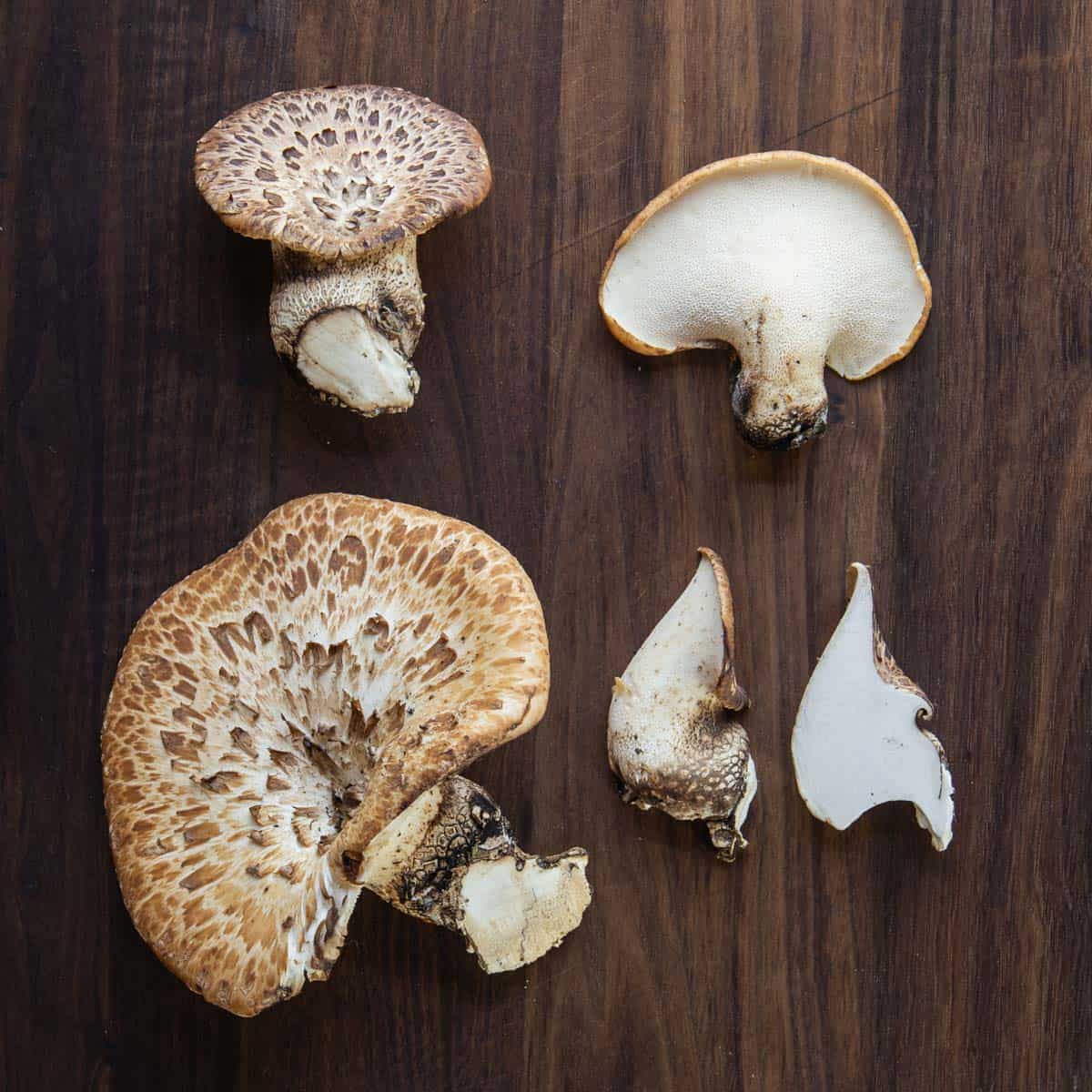
The cap is covered in thin, brown scales. They can grow to be quite large, and caps 12 inches across are common. Very young mushrooms will resemble wine corks.
Below: Very young pheasant mushroom buttons on an elm tree.
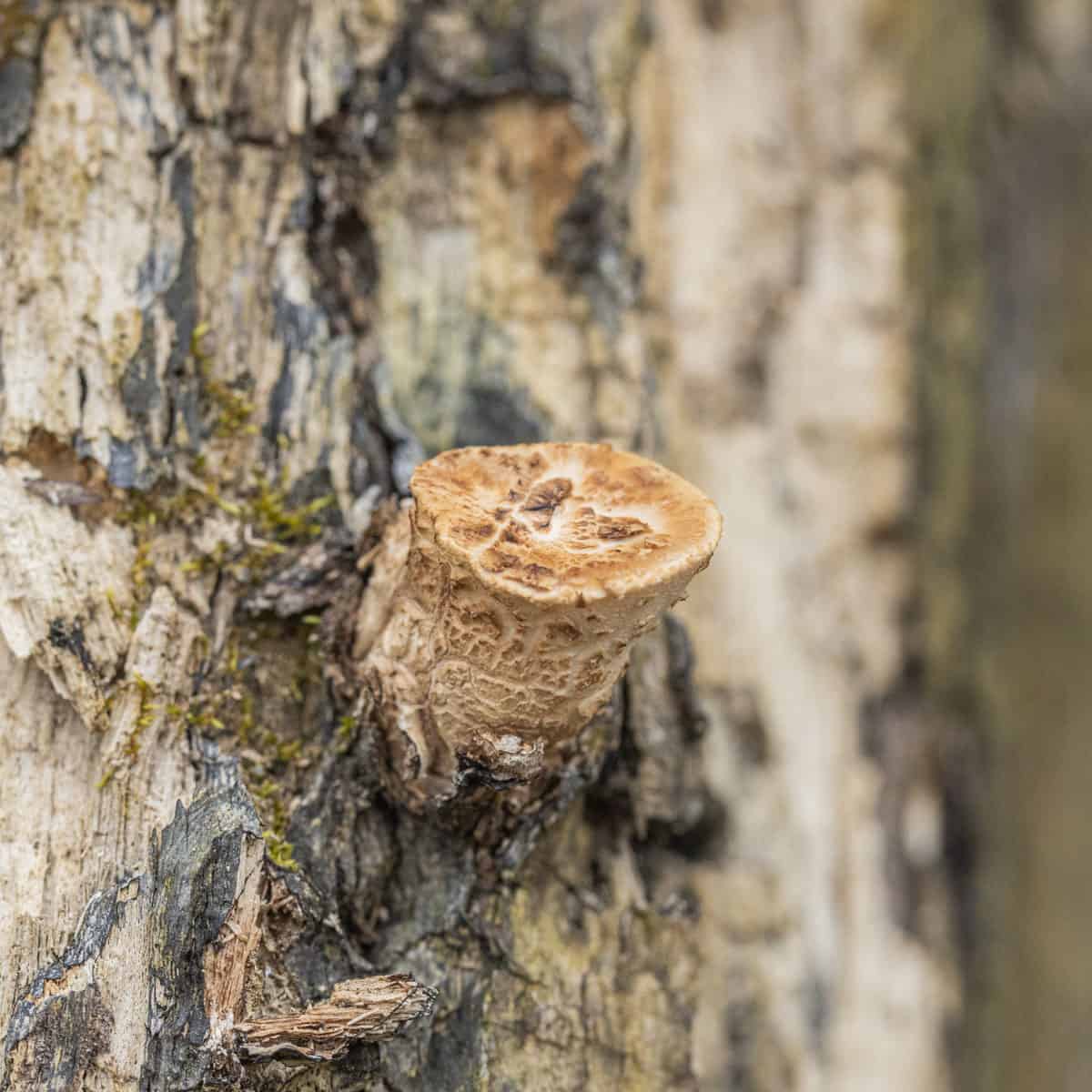
Pheasant Back Mushroom Look Alikes
The most common look alike is the Train-Wrecker (Neolentinus lepideus), but some people mention hawks wing mushrooms (Sarcodon imbricatus) as well. Both look alikes are edible, but not as good as C. squamosus.
Below: Train wrecker cap, and train wrecker gills.
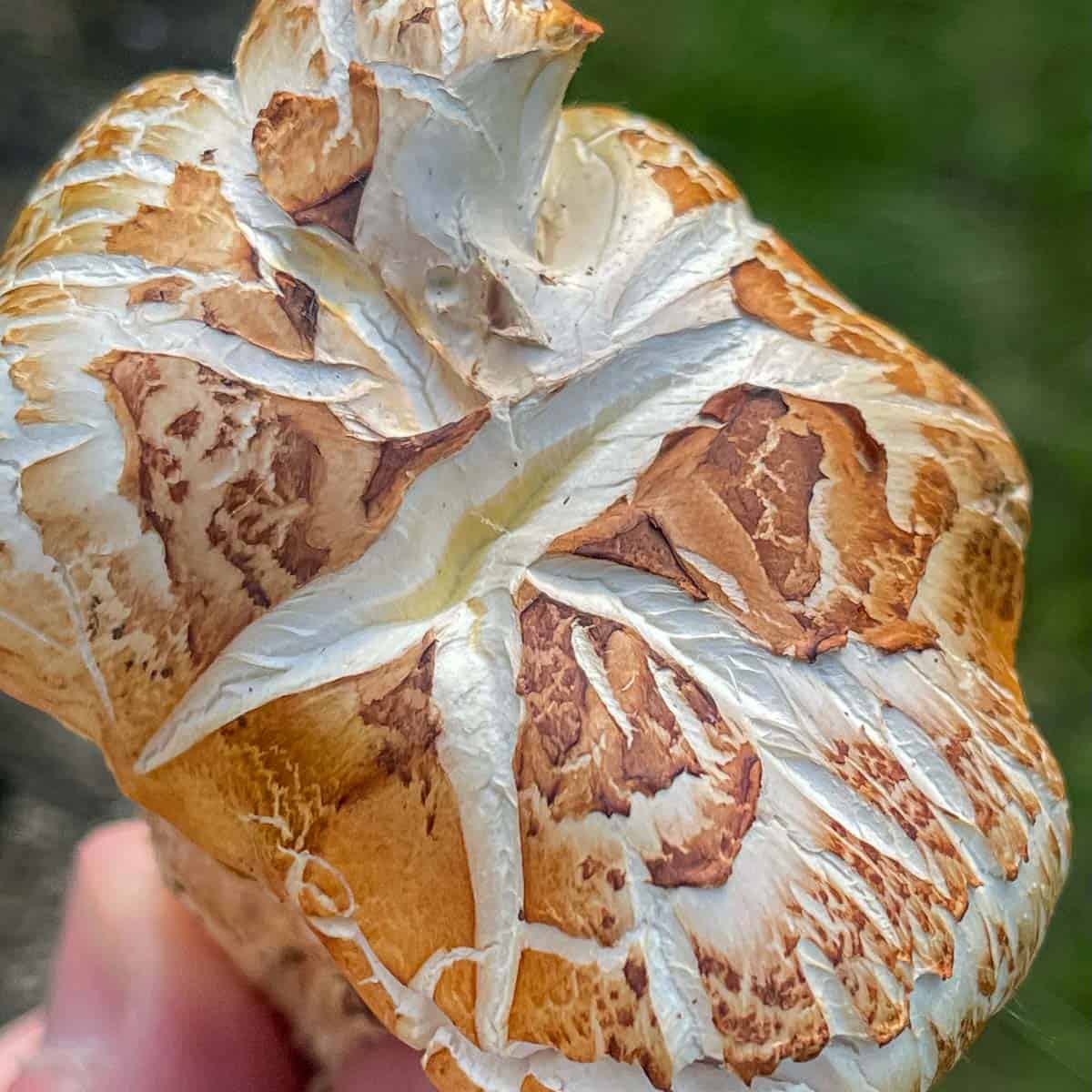
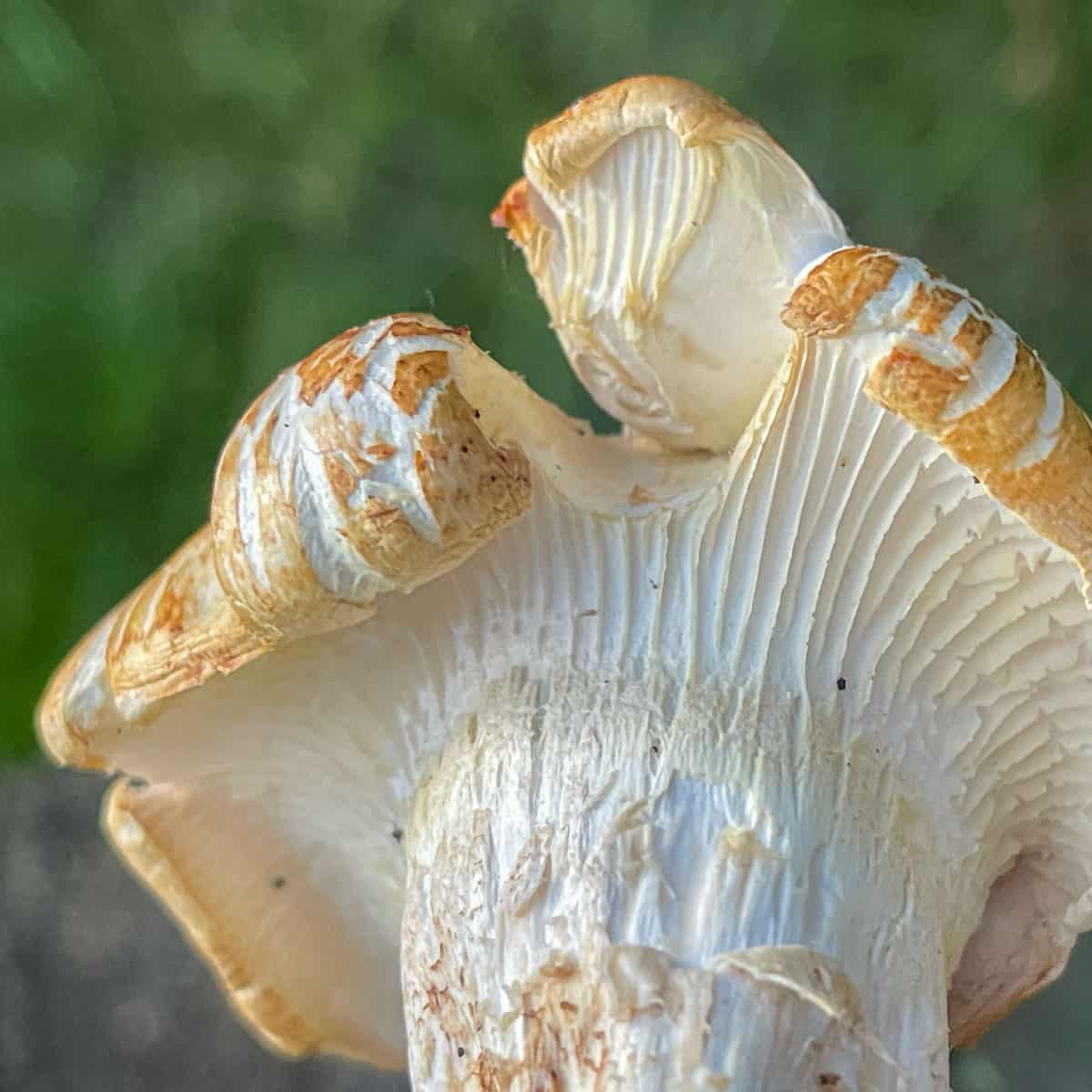
Below: Hawks wing mushrooms or Sarcodon imbricatus.
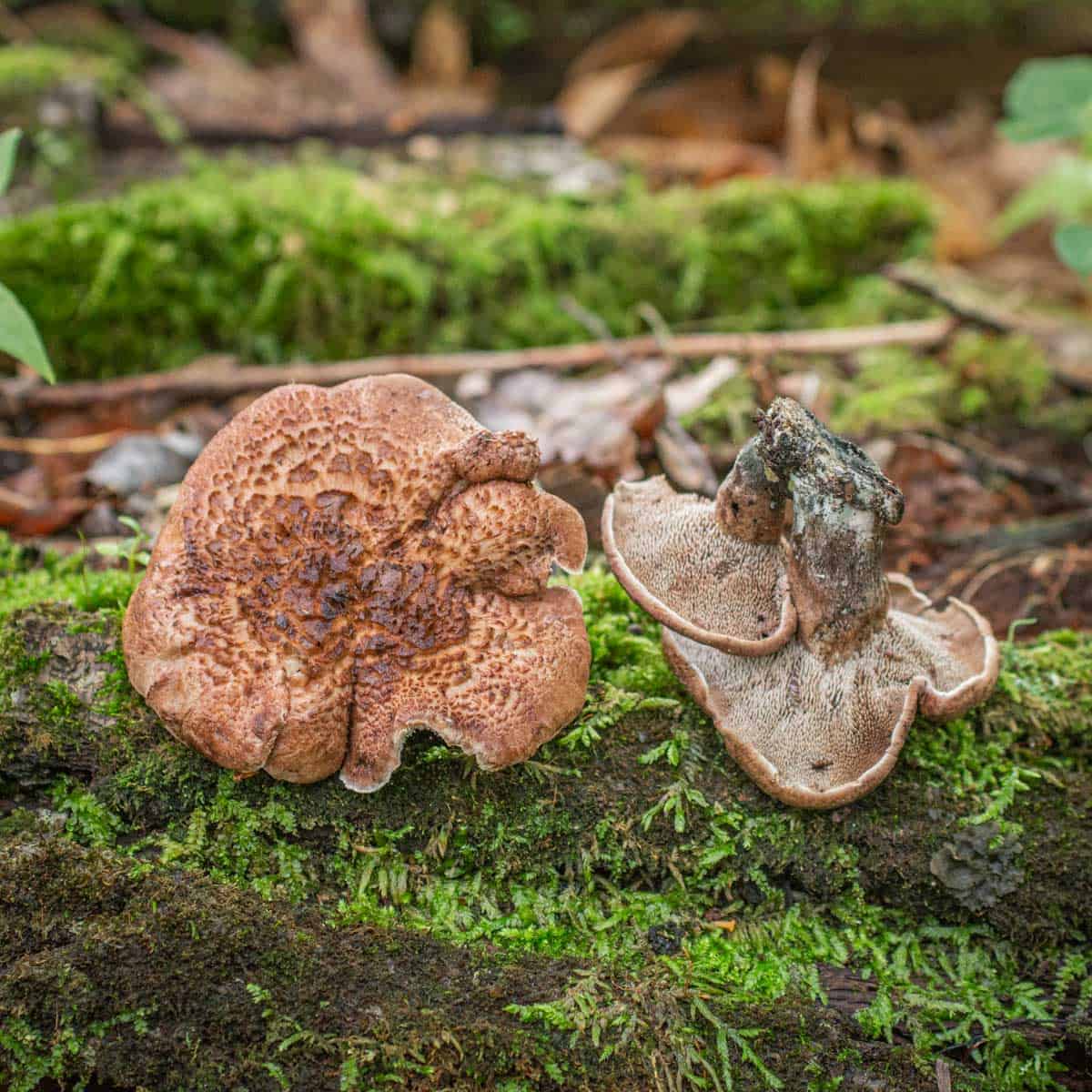
What do Pheasant Back Mushrooms Taste Like?
Some say dryad saddle mushrooms smell and taste like fresh cucumber, some say watermelon rind. The aroma of the dryad saddle, along with other mushrooms like Clitopilus prunulus, is known as "farinaceous" referring to an odor of grain. I don't understand the reference, but it's useful if you run across it in a field guide or mushroom book.
Below: Note the black stem, which may or may not be present.
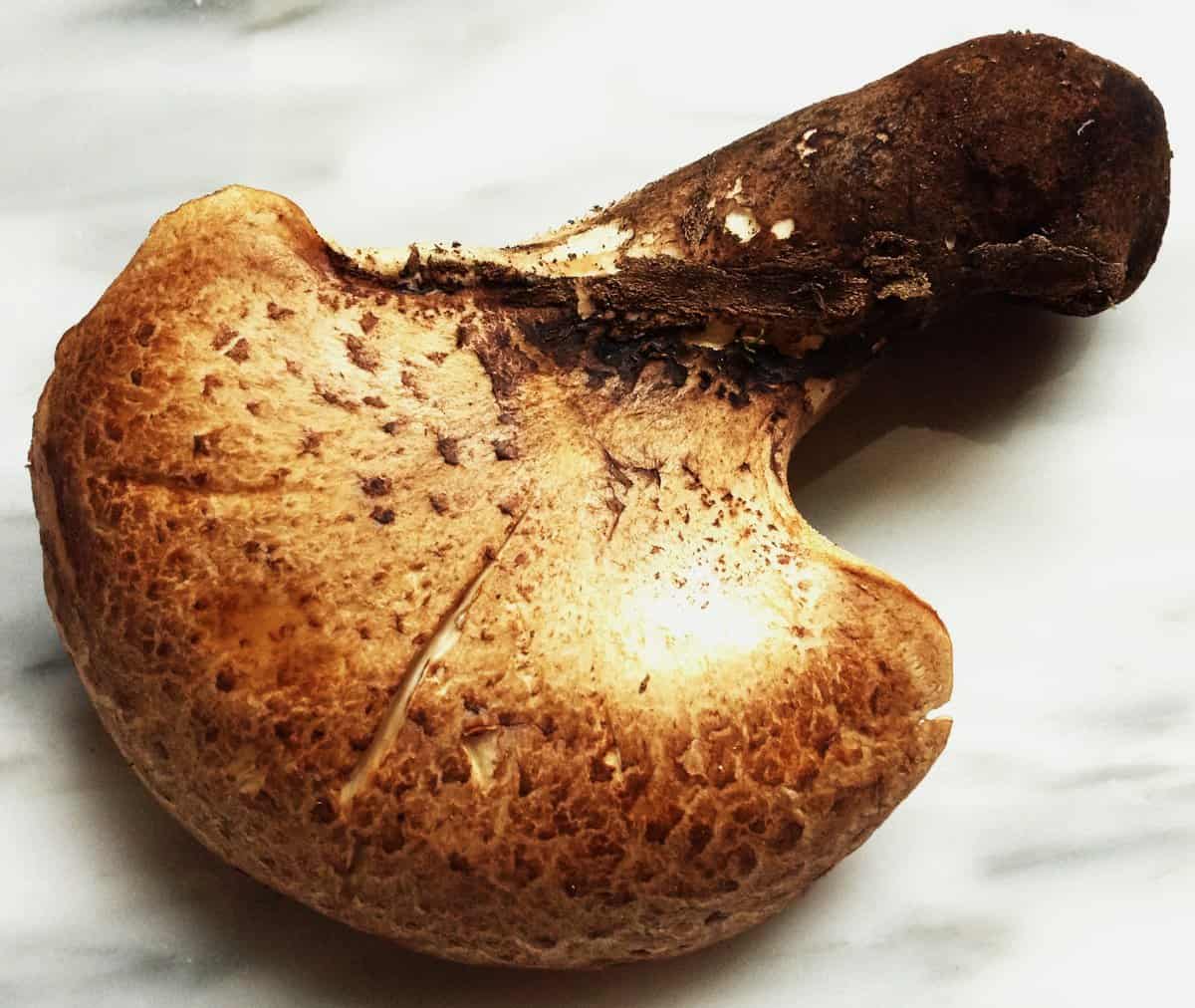
Where to Find Pheasant Back Mushrooms
These are one of the most common wild Spring mushrooms, appearing in April or early May before morels. They're only found east of the Rockies.
Below: Pheasant mushrooms on an elm tree.
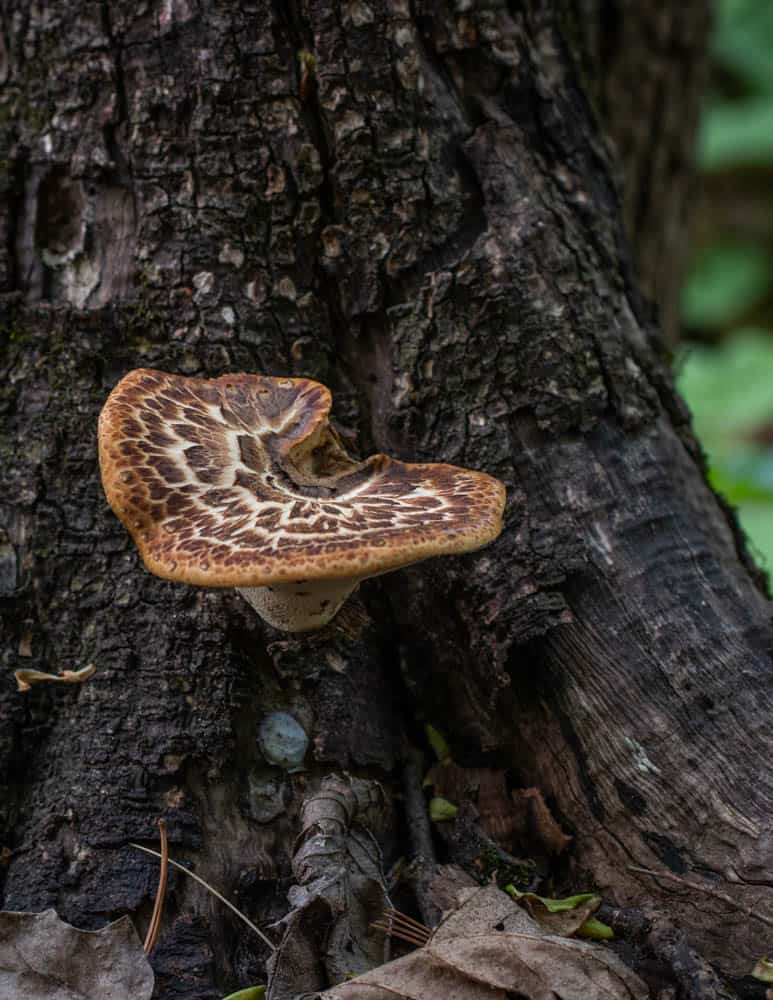
These are a parasite of dead and dying trees, causing a white rot like other polypores. They grow on decaying logs, stumps, injured and dead hardwood trees. In Minnesota and Wisconsin, I usually find the mushrooms growing on box elder trees and elm trees.
Below: Spring box elder leaves.
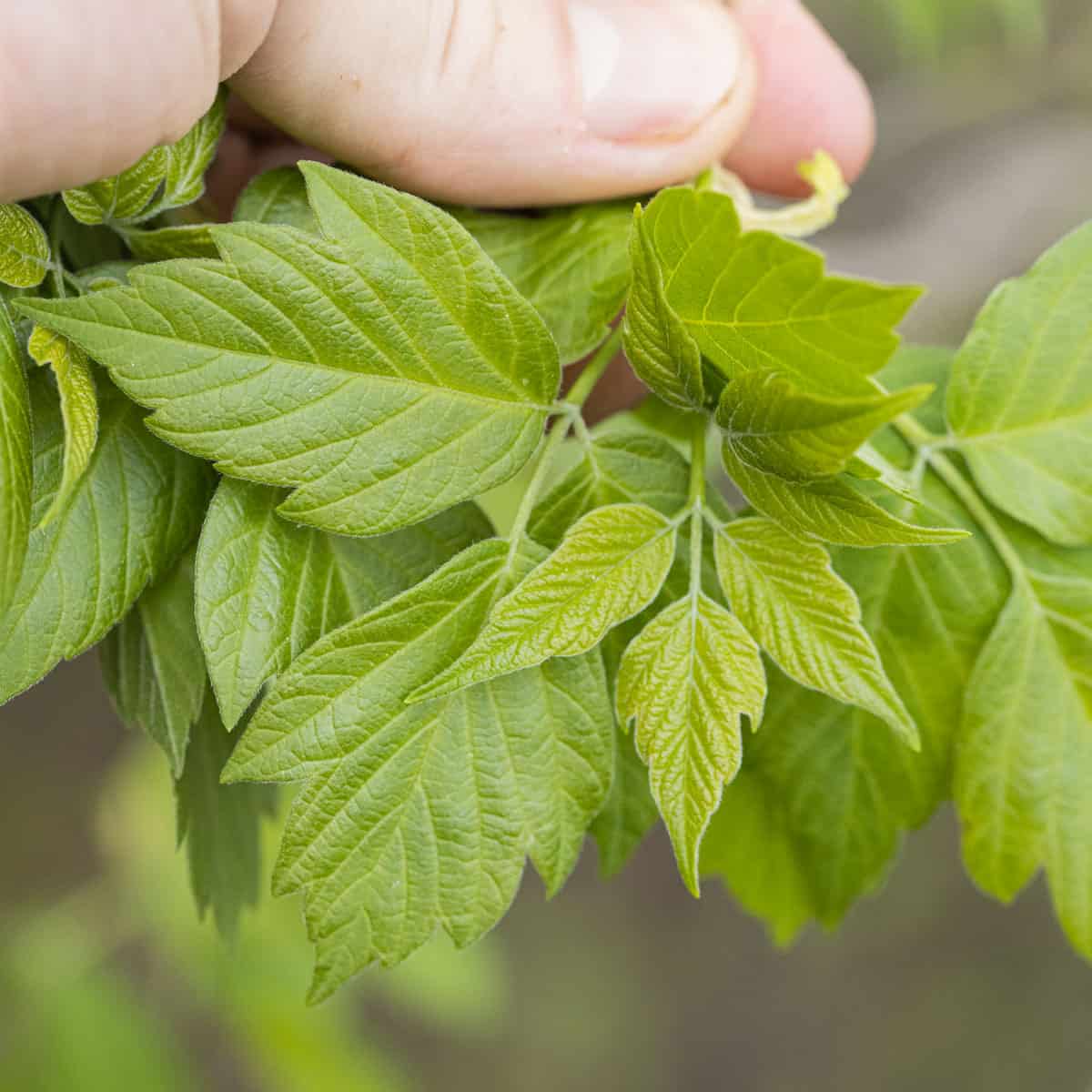
Below: spring elm leaves.
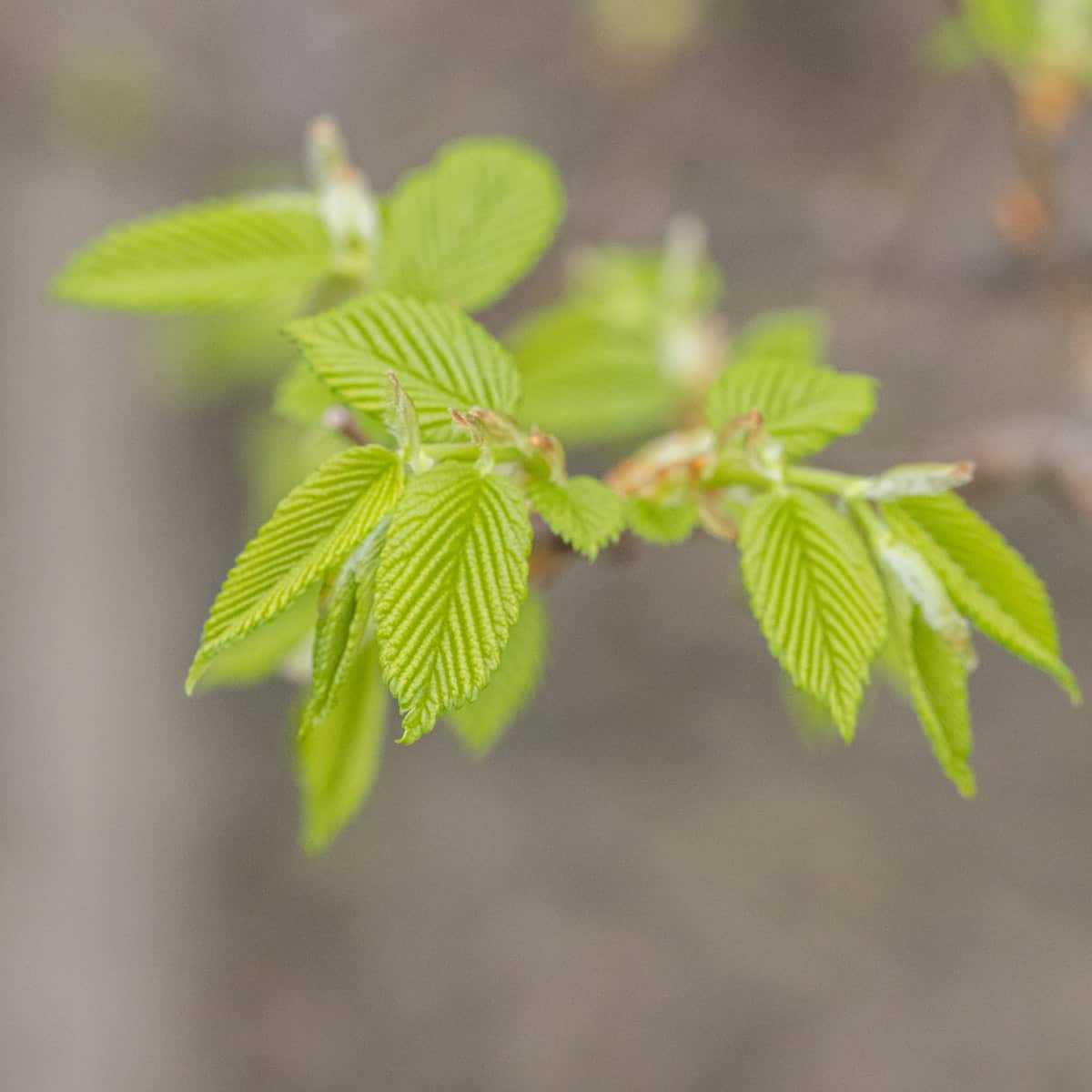
Look in deciduous hardwood forests for these in the spring after heavy rains. They'll continue to fruit throughout the year, but it's more difficult to get them young and tender after Spring when they fruit the heaviest.
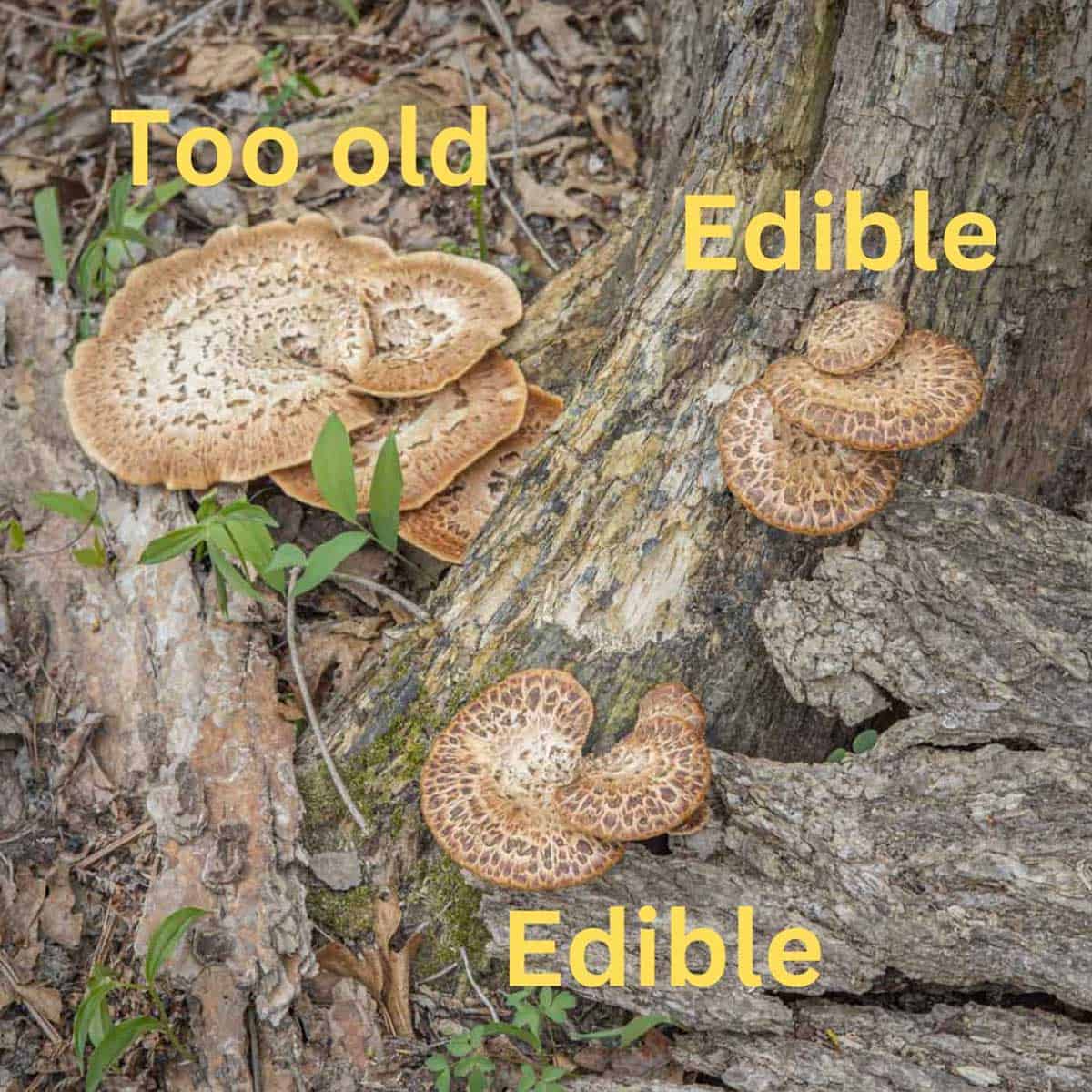
Harvesting Pheasant Back Mushrooms
Cut the mushrooms from the tree with a sturdy mushroom knife. You can discard the woody stem or trim them later. The mushrooms are usually very clean, but can be rinsed with cool water if necessary.
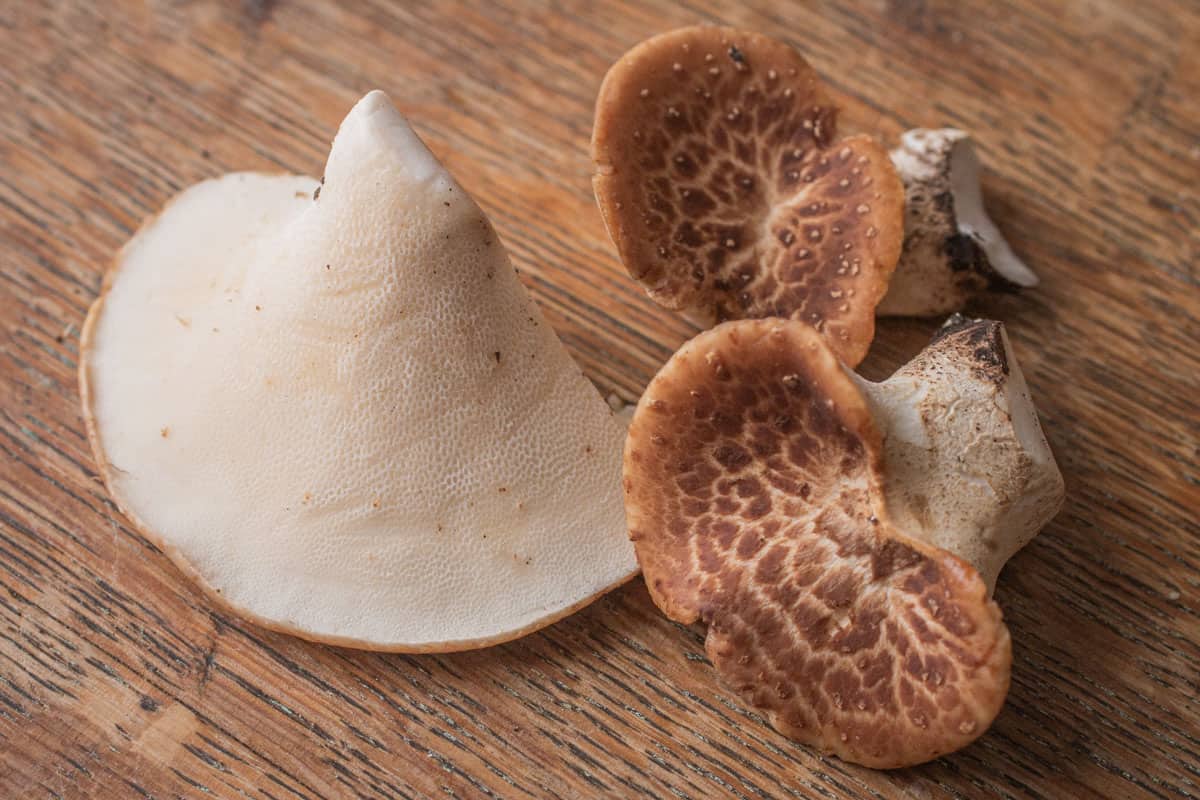
Store fresh pheasant backs in a large zip-top bag in the refrigerator with a paper towel to absorb moisture. They'll last for a week.
The most important thing is finding young mushrooms as older mushrooms are too tough to eat. They should have a deep brown color and markings. Avoid mushrooms that look white or cream which are old and tough.
Below: The pheasant's back mushroom on the left are too old, perfect ones for eating are on the right.
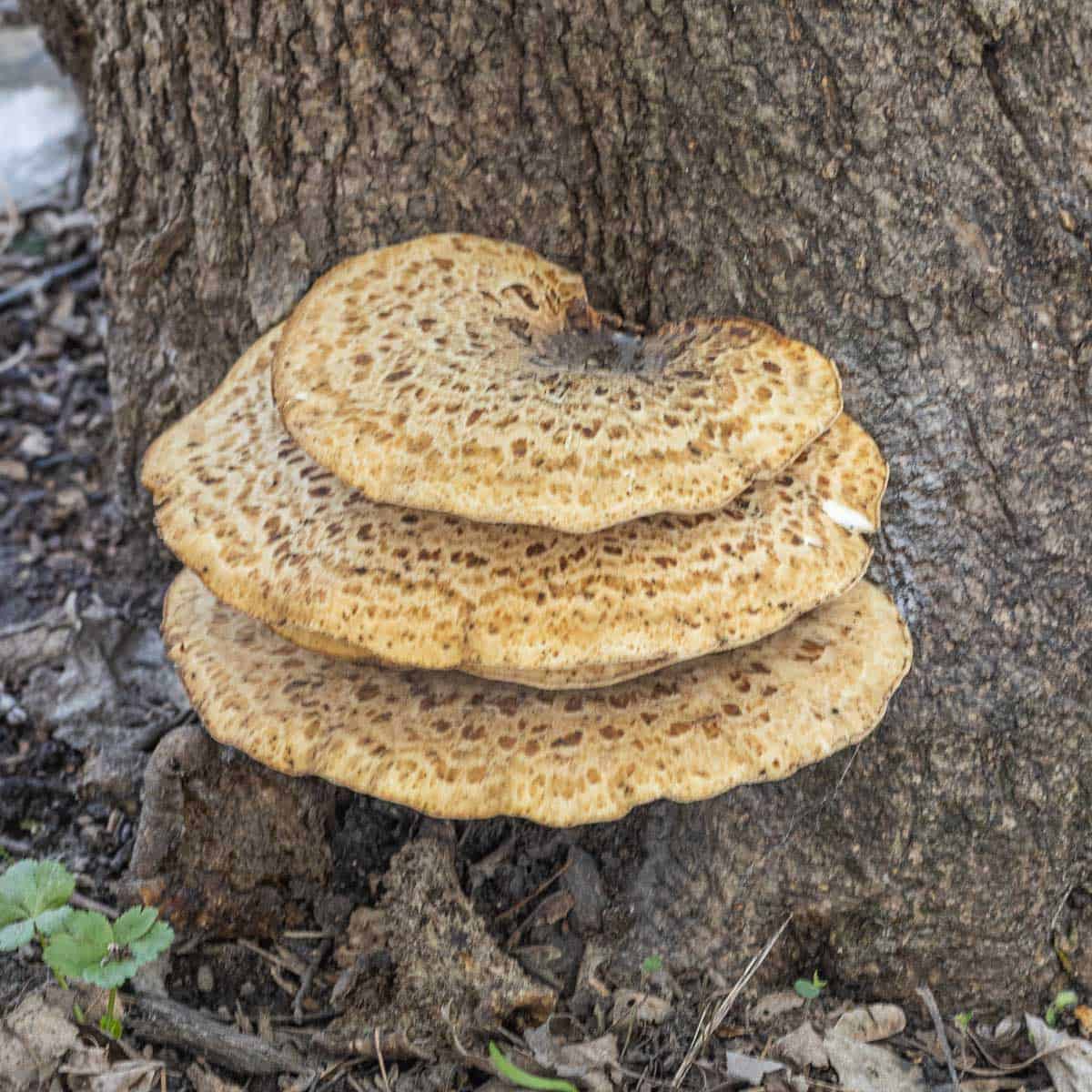
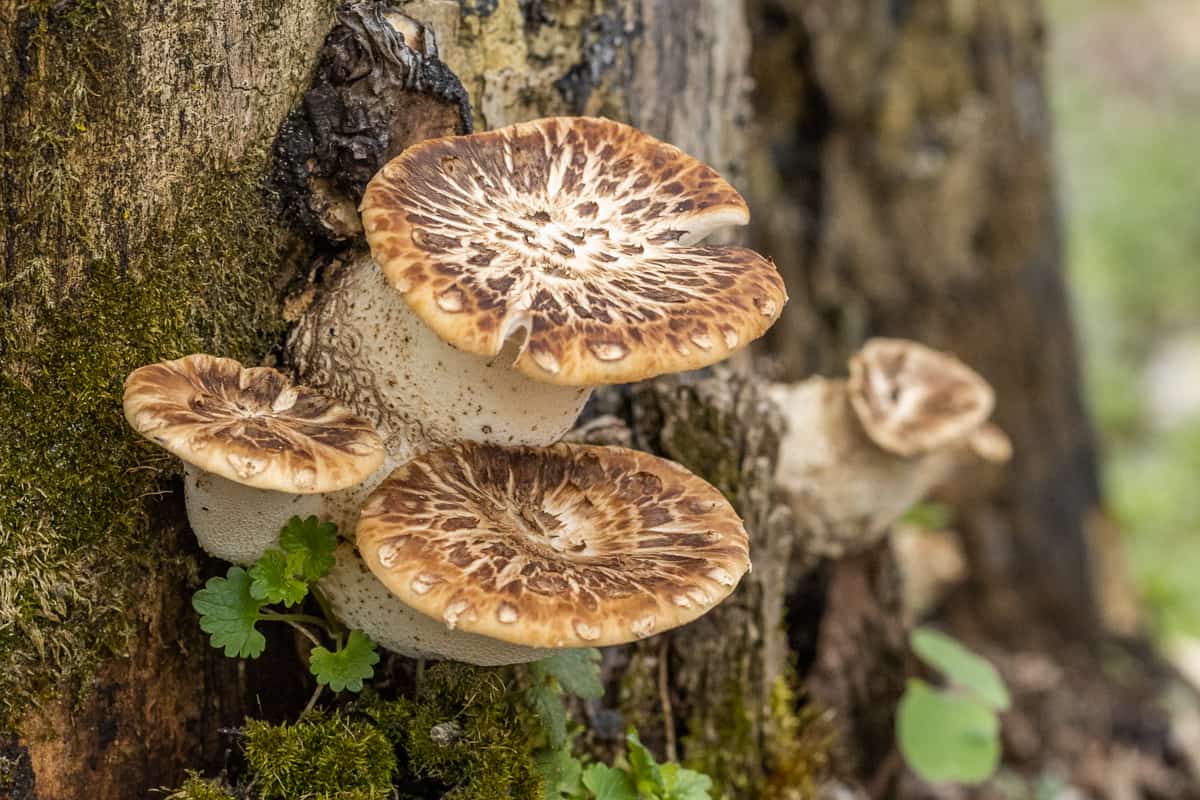
Knowing when the mushrooms are at the best stage to eat is confusing as the mushrooms grow very fast, and the pores on the underside of the mushroom change as they mature.
The young mushrooms you want have tight pores. Older mushrooms will have open, honeycomb-shaped pores. The pictures below illustrate the differences.
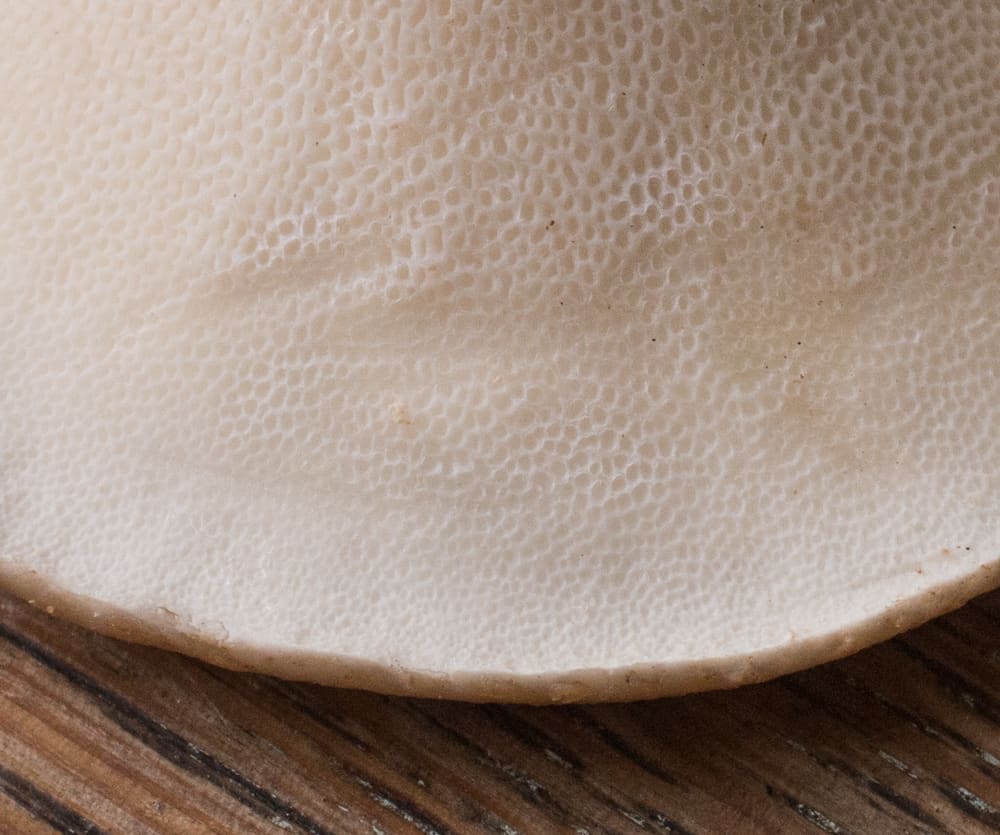
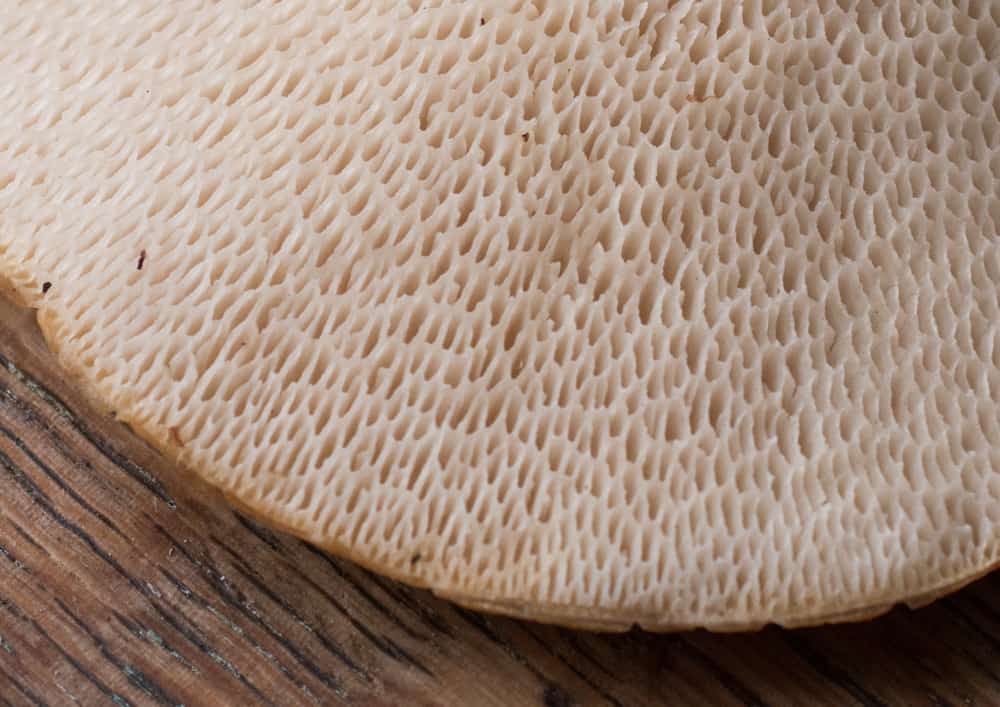
Above: The mushrooms on the left are young and tender, the pores are barely visible and the underside of the cap is almost smooth. Mature mushrooms on the right have visible, open pores and are too tough to eat.
To check if a mushroom is tender I use what I call the scrape test. Take a fingernail or hunting knife and gently scrape the underside of the cap, if the pores are easily scraped off it's tender. If the pores seem stuck to the cap, toss it or save for mushroom stock.
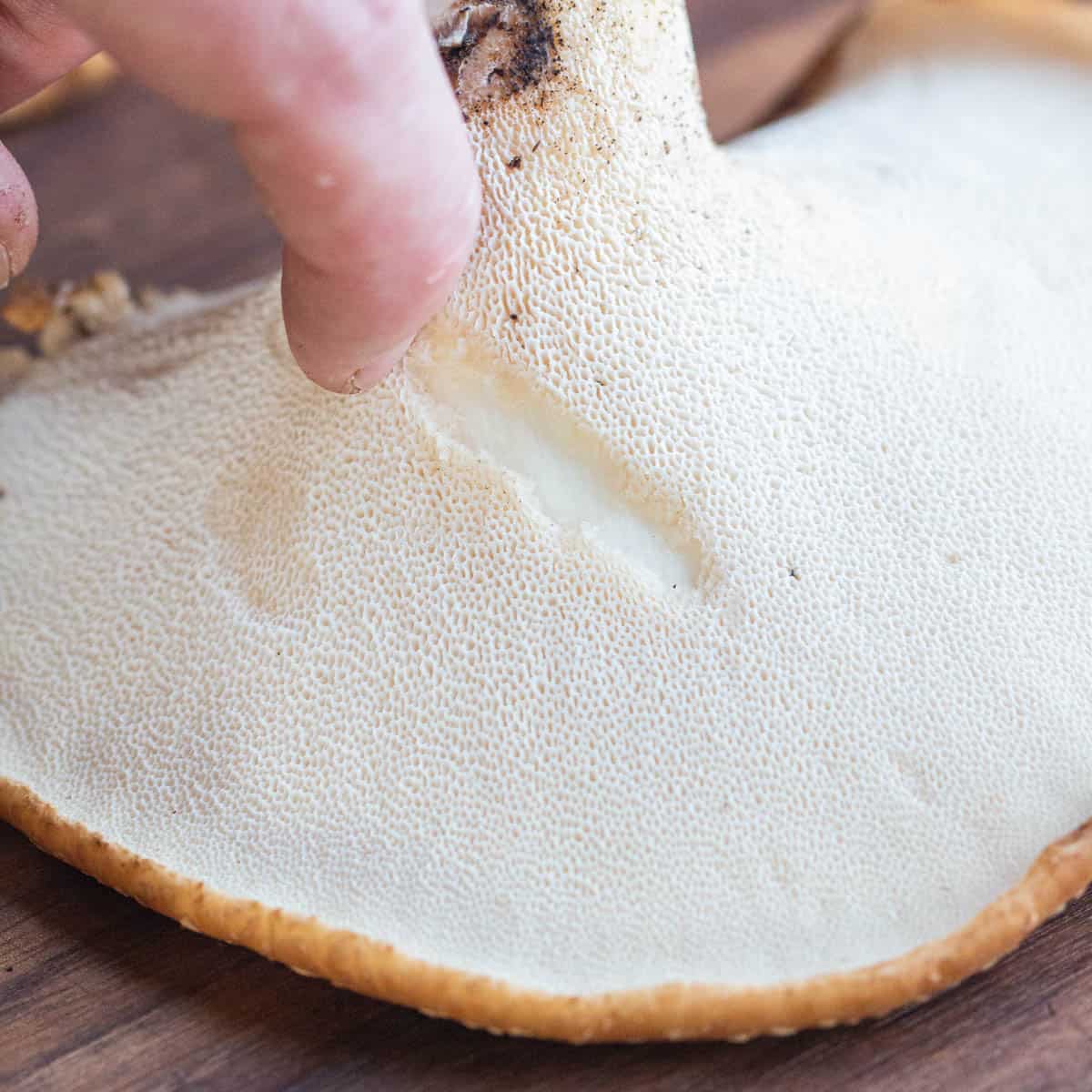
Above: scraping the pores off with a fingernail will tell you if the mushroom is tender.
Cooking Pheasant Back Mushrooms
How do you cook a dryad saddle? That depends on how old the mushroom is. You wouldn't eat asparagus when it's old and woody, but you could make soup with them. The dryad's saddle is the same.
 Young dryad saddles are so soft you could slice them without using the mandoline.
Young dryad saddles are so soft you could slice them without using the mandoline.
The first thing I do is cut off the black stem and scrape away the pores on the underside of the cap with a paring knife. You don't have to remove the pores if the mushrooms are very young. Here's some tips for preparing pheasant back mushrooms.
- Choose young, small mushrooms.
- Inspect the pores, they should be tight and compressed.
- Scratch the pores with a fingernail-they should come off easily.
- Slice the mushrooms as thin as possible, preferably using a mandoline slicer like the Benriner model. Very young mushrooms can be sliced with a knife.
Below: Hold the mushrooms by the stem and slice. Rotate around the stem to cut the tender edges. Discard the woody stem.
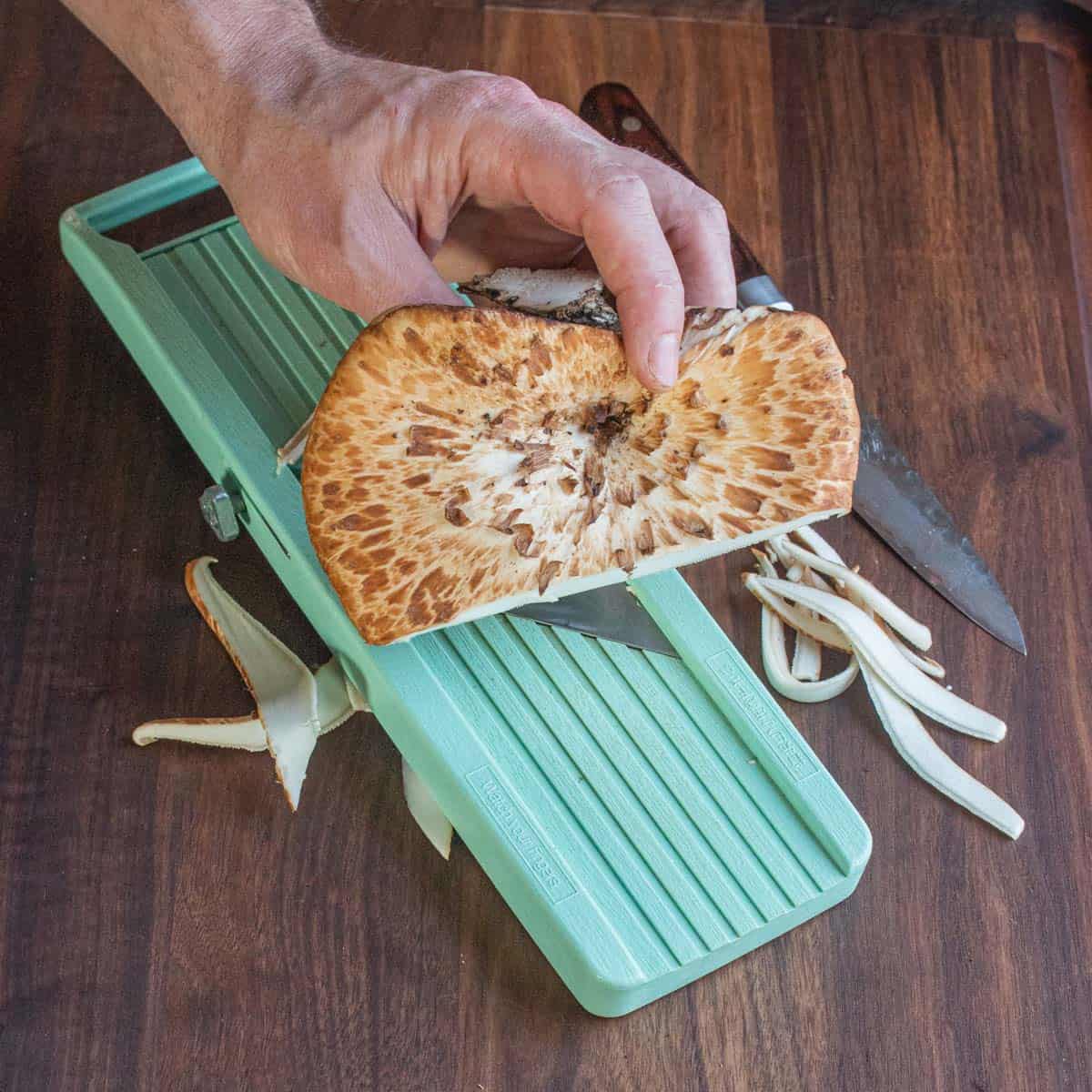
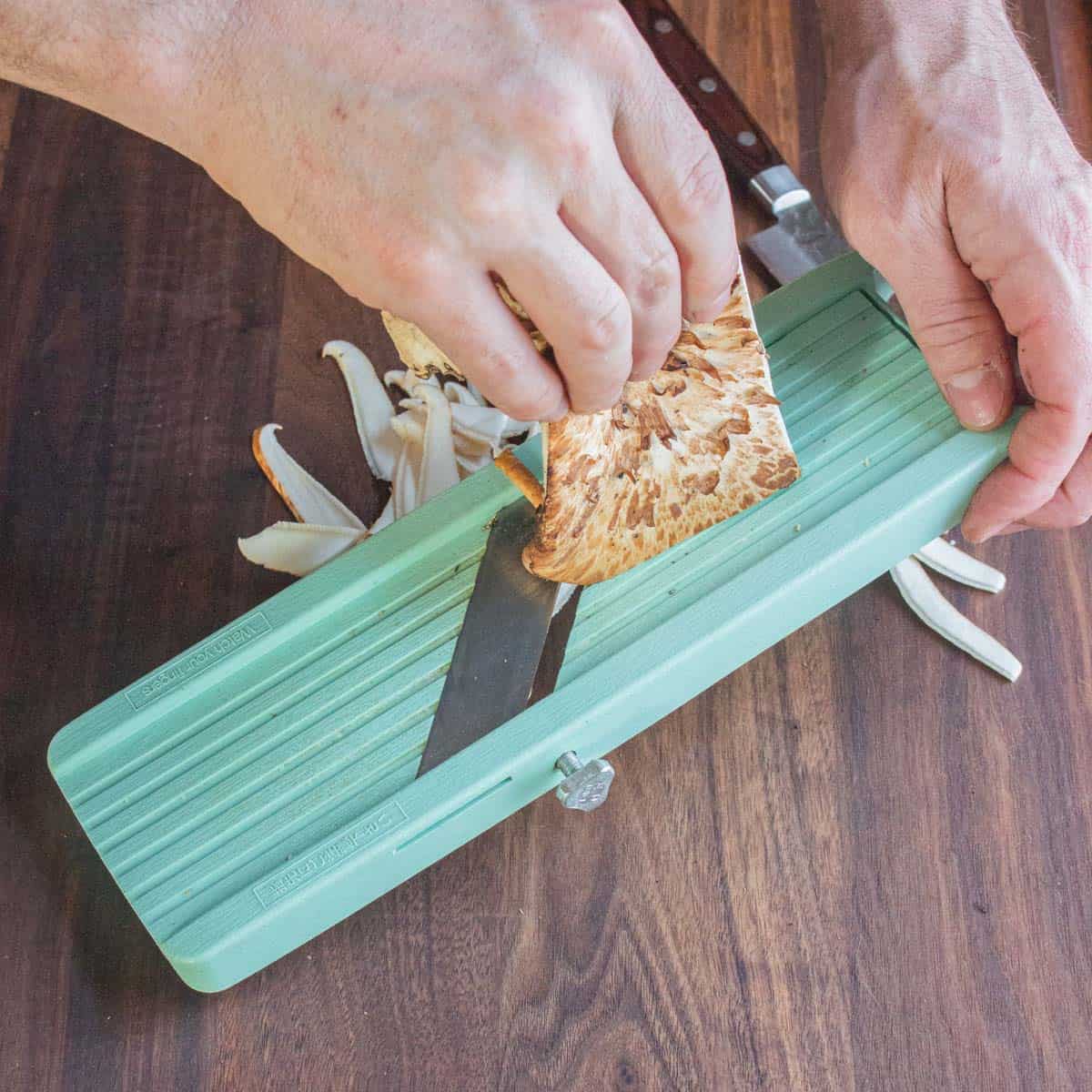
Shaving the dryad saddles makes your work a lot easier-a paring knife isn't the best.
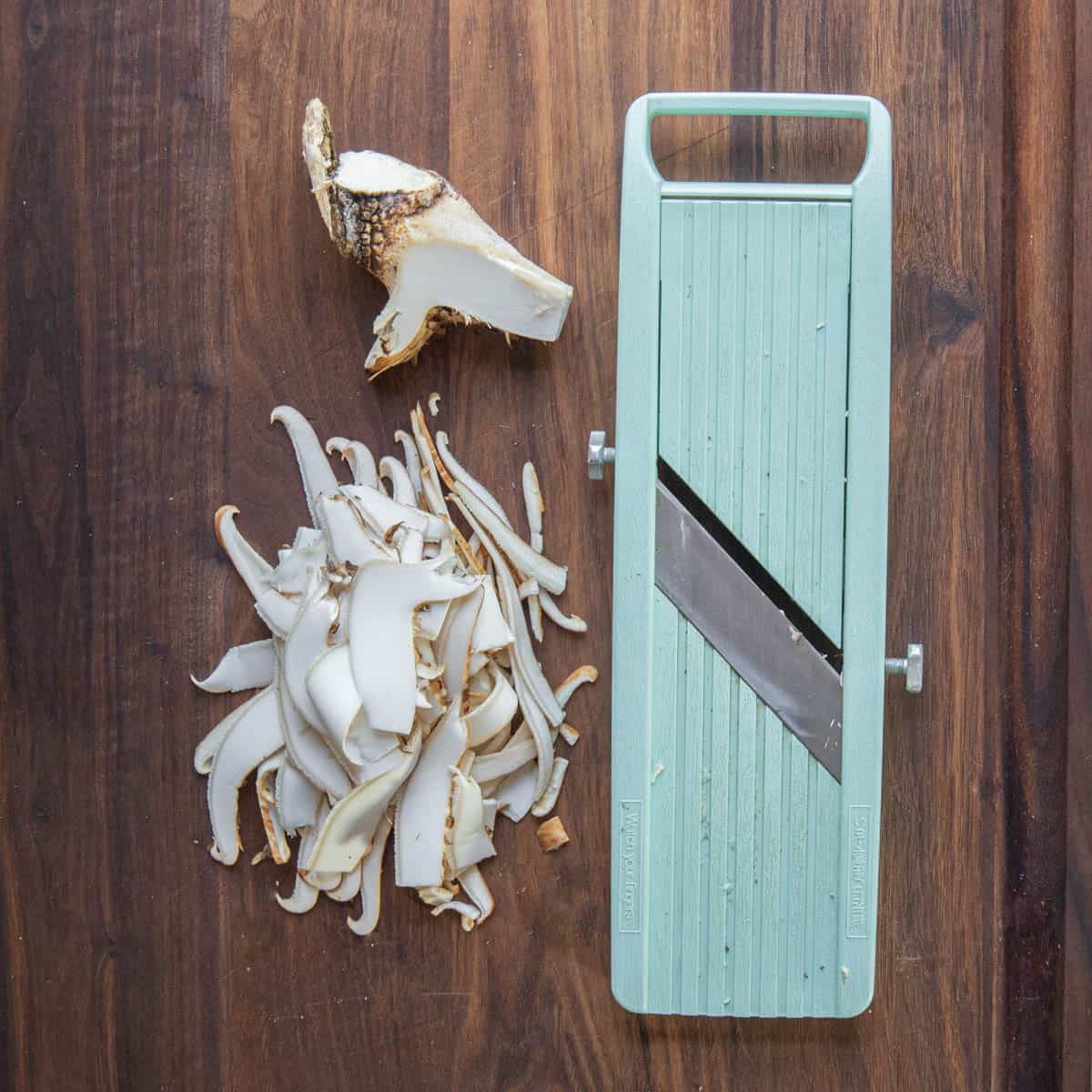
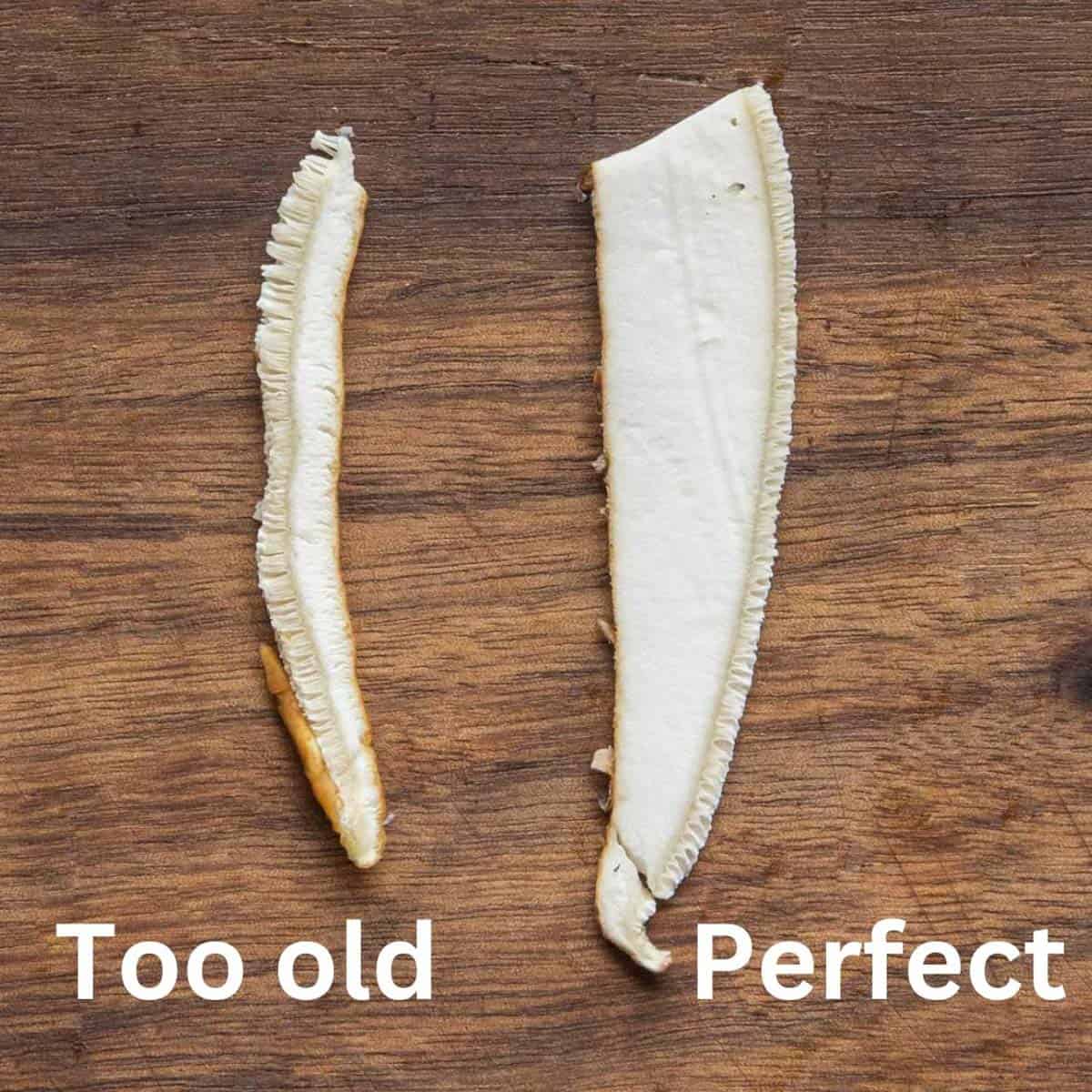
Above: Mushrooms on the left are edible, but ideally they'll be mostly flesh like on the right.
After they're thinly sliced, they can be cooked like any other mushroom. I like to cook thin slices of mushroom in a pan with butter, salt and a splash of wine or stock until the liquid evaporates and the mushrooms start to brown a little.
Pheasant back mushrooms can be eaten raw, but it's best to sample them in very small amounts. They taste better cooked anyway. Here's a few other examples.
Below: Add them to soups and stews. Older mushrooms make a good mushroom broth.
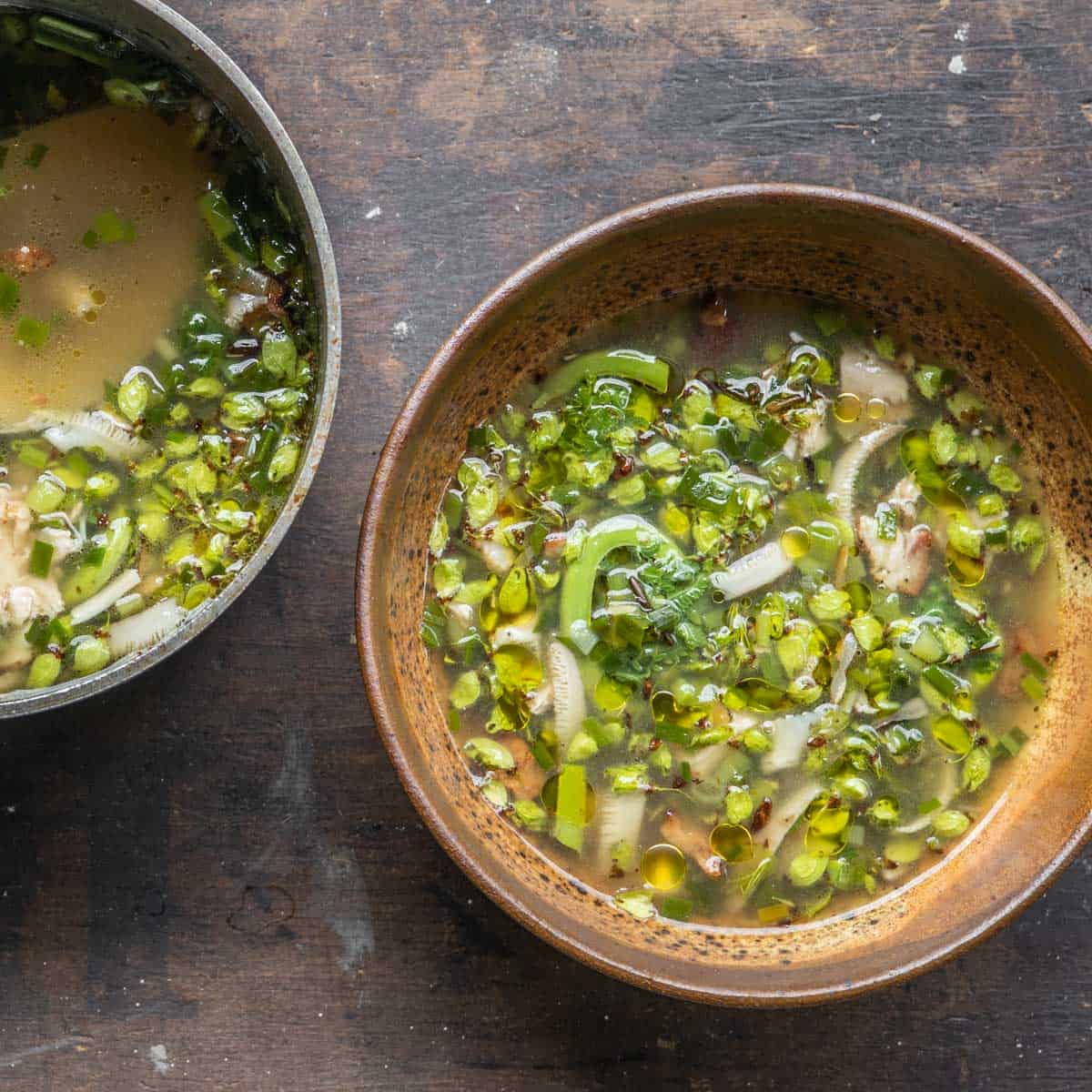
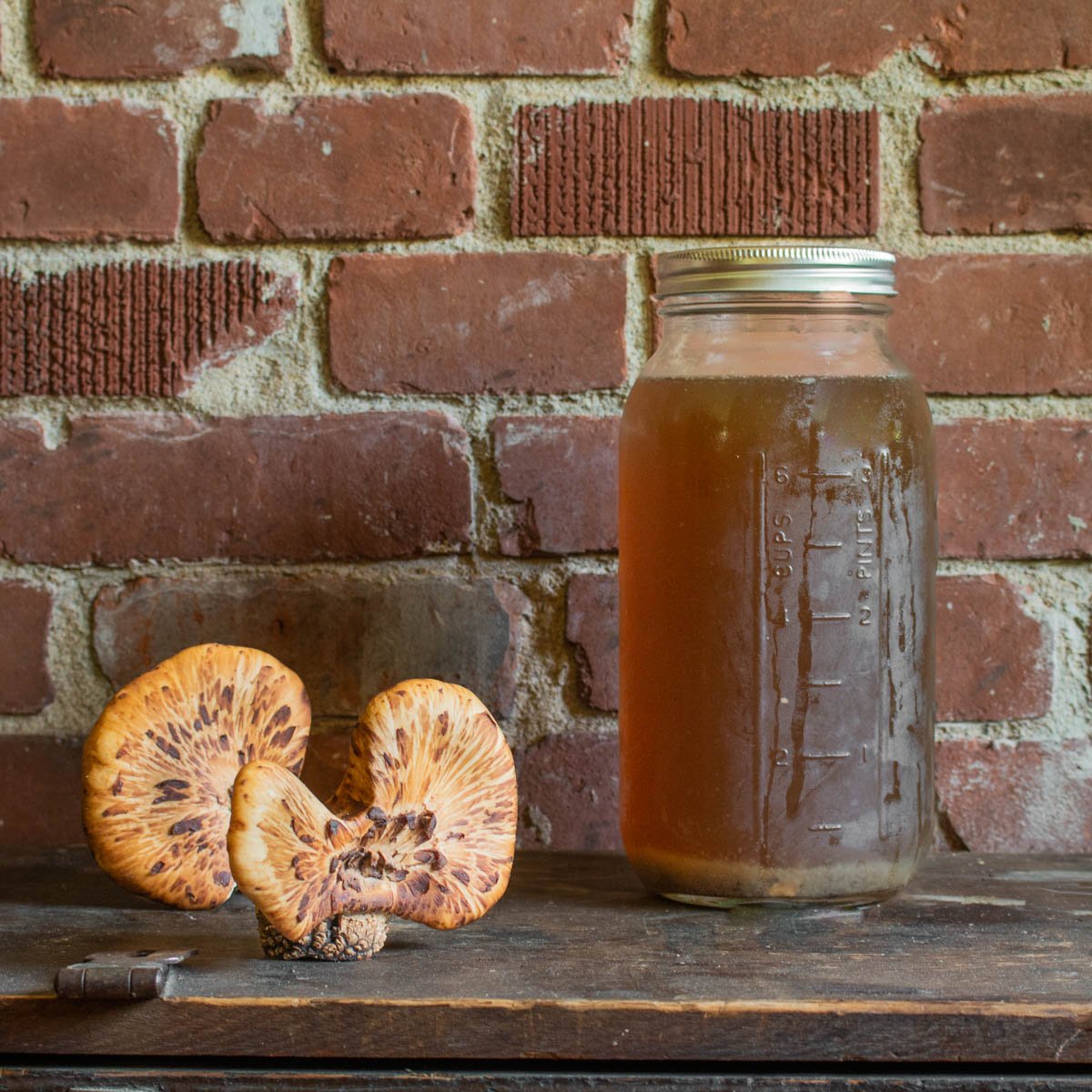
Below: Blend in a food processor to make duxelles.
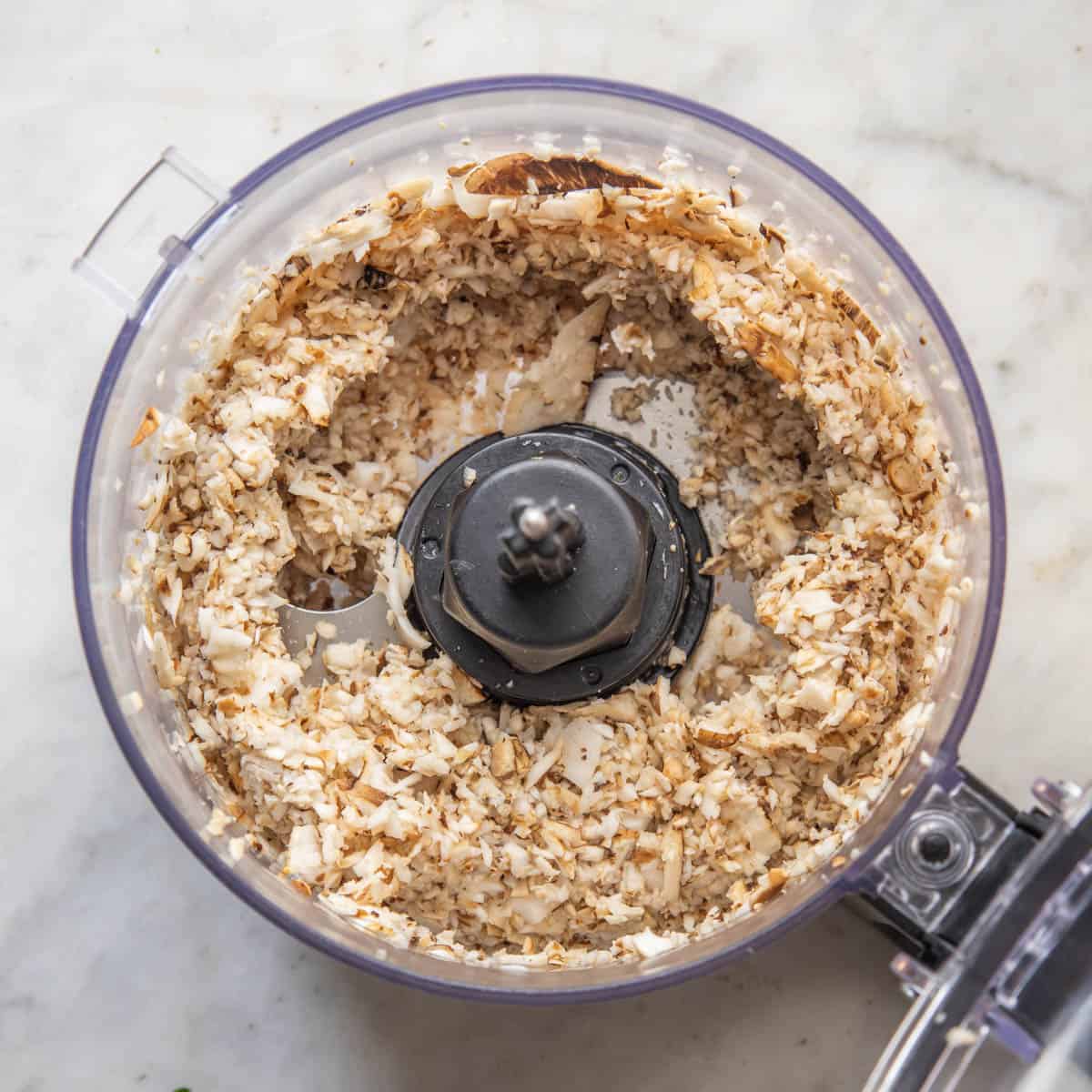
Below: Sauteed dryad saddles with other spring ingredients.
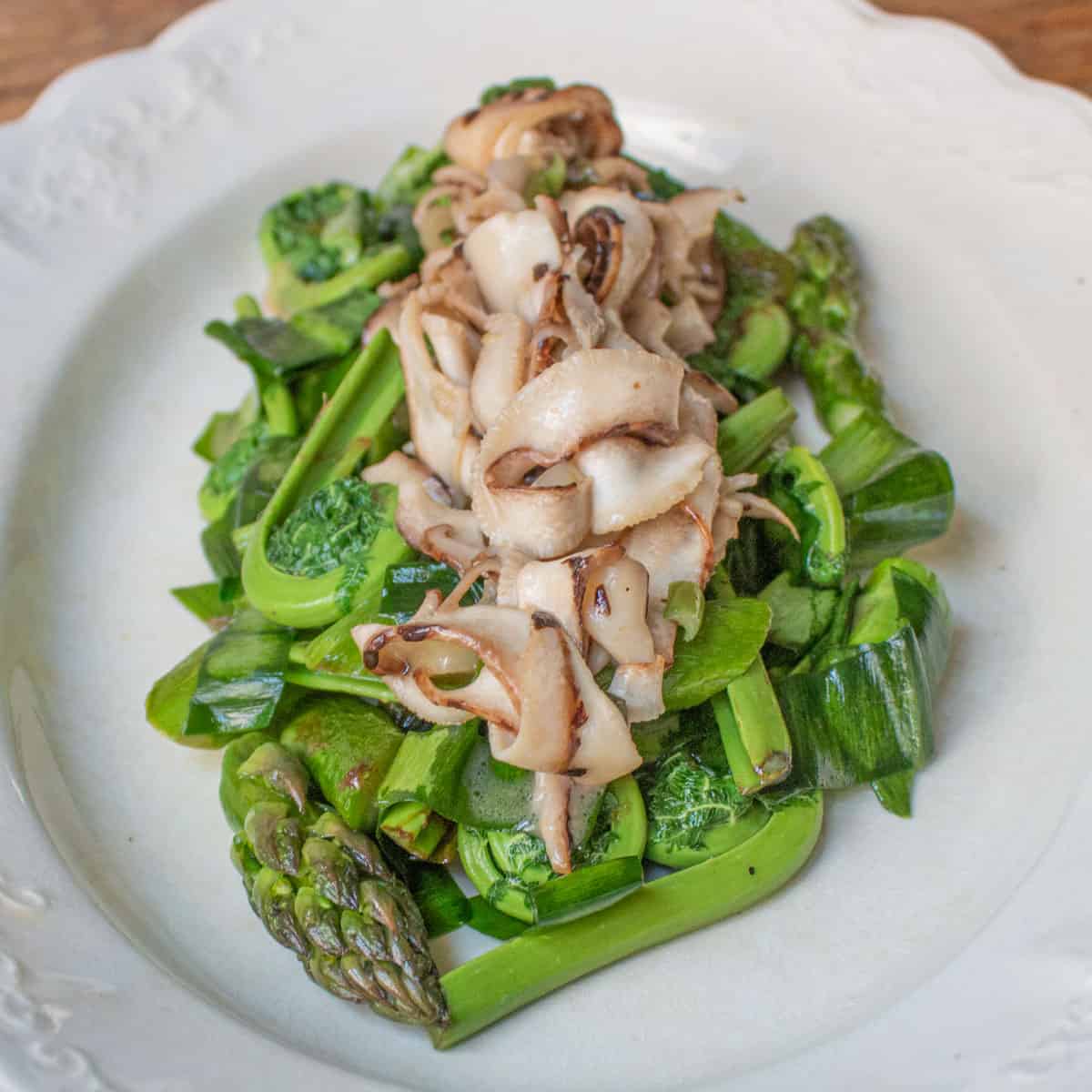
Preserving Pheasant Back Mushrooms
The mushrooms can be dried, but won't get tender after cooking. Older mushrooms can be dried or powdered for making stocks and soups.
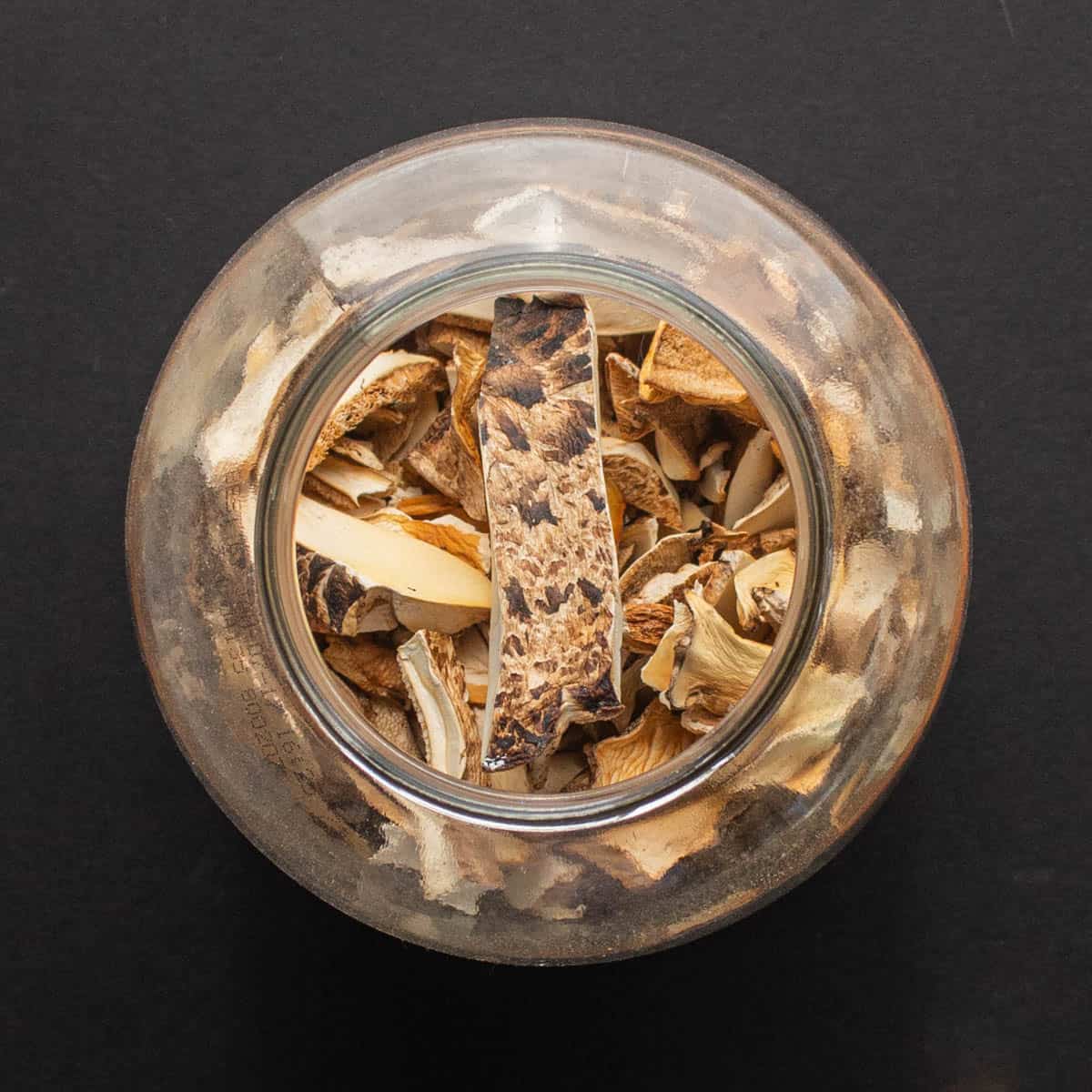
To dry pheasant backs, cut them into thin slices and dehydrate at 145 F (high) until brittle, about 24 hours. Store the dried mushrooms in a mason jar. If you slice them thinly, they make excellent pickles with a nice texture.
You can freeze pheasant back mushrooms by quickly cooking them in a little butter and salt until wilted then freezing in zip loc bag. Vacuum sealed, frozen mushrooms will last the longest-about 6 months.
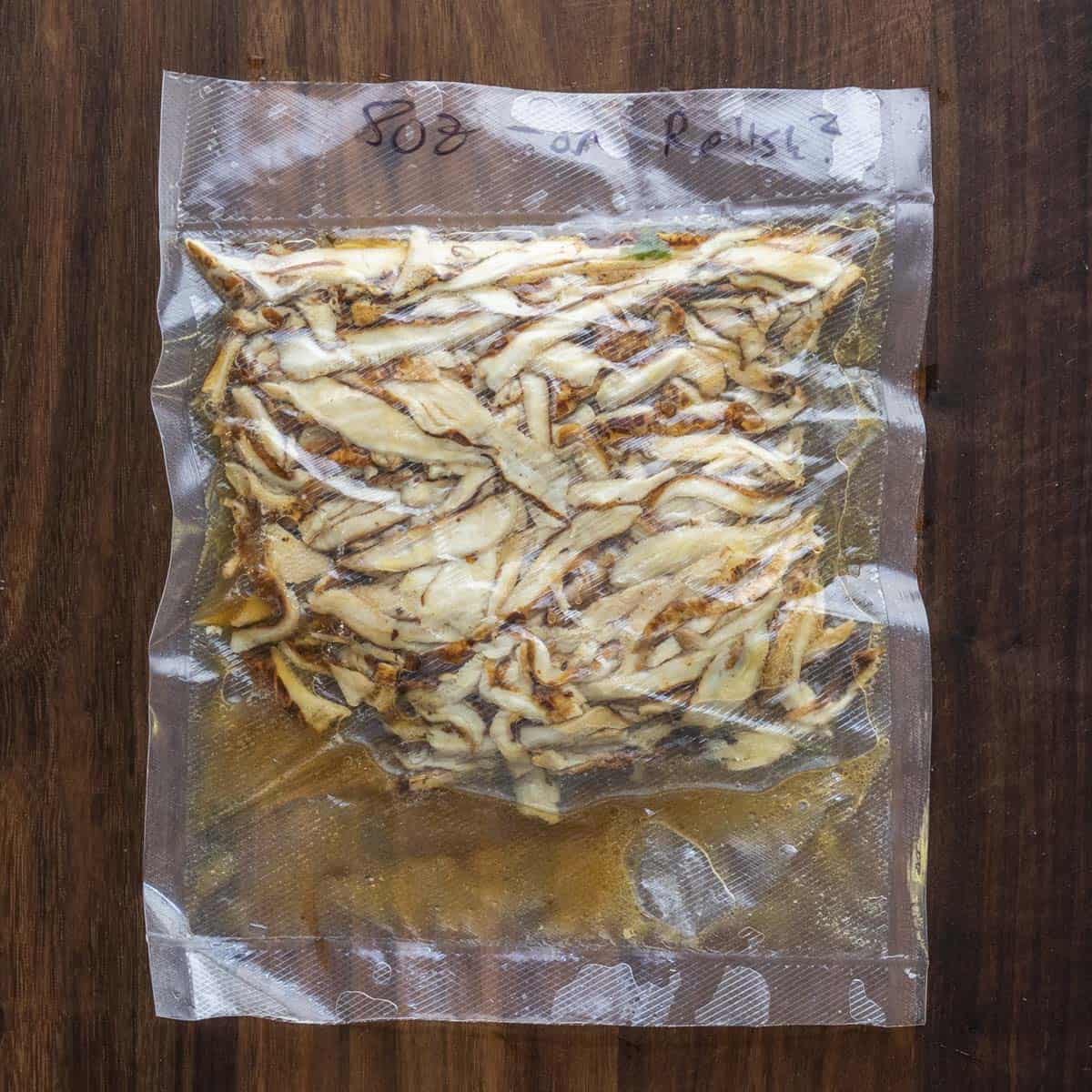
Pheasant Back Mushroom Recipes
These can be cooked like any other mushroom but the recipes below are good places to start.
White Wine Pheasant Backs
Pheasant back mushrooms simmered with garlic, wine and herbs are a reader favorite.
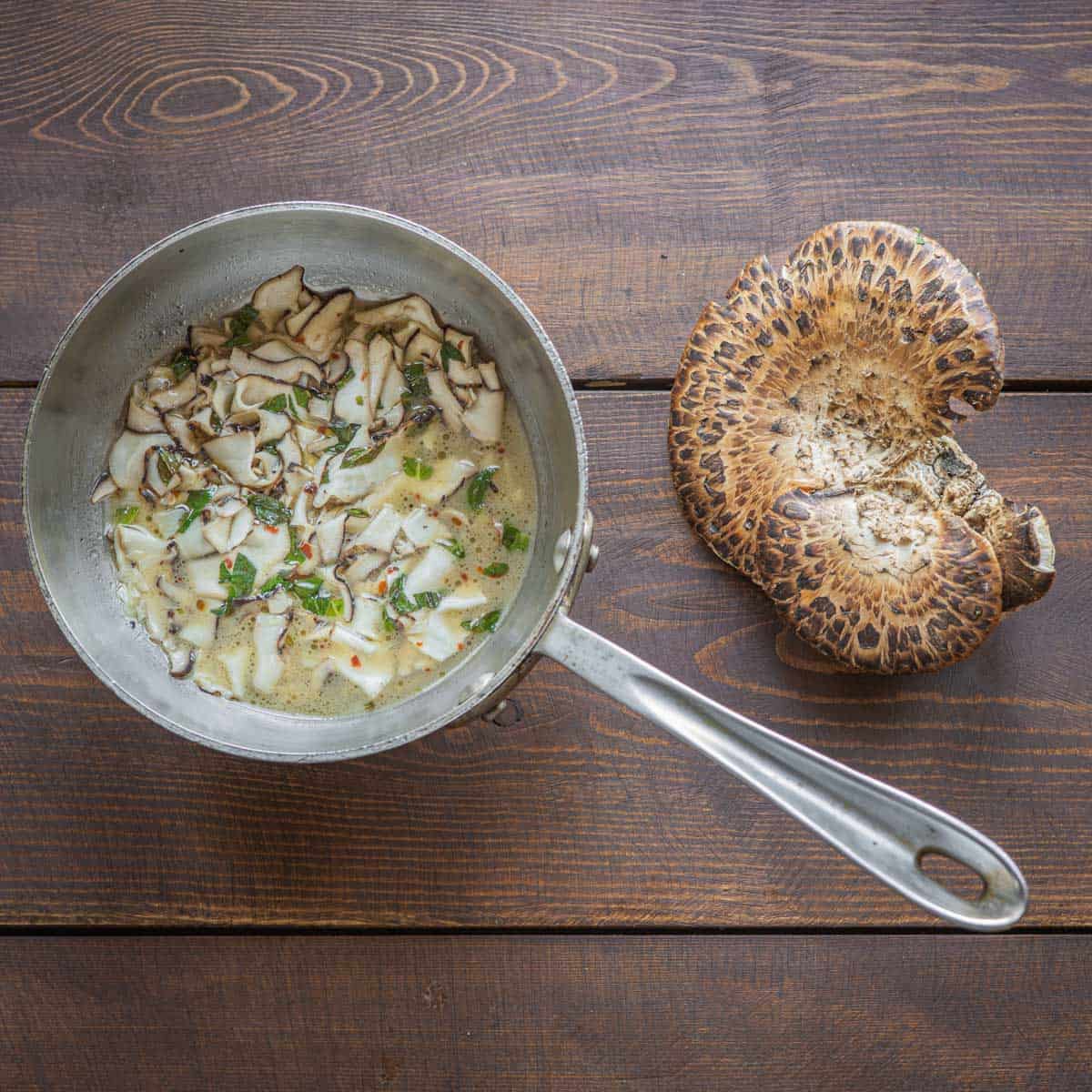
Basic Dryad Saddle / Pheasant Back Broth
A simple broth you can make with tough parts or woody trim. Use it to make ramen or soup.

Dryad Saddle Ramen
A delicious bowl of mushroom broth and dryad saddles. Add fresh wild vegetables for a great Spring entree.
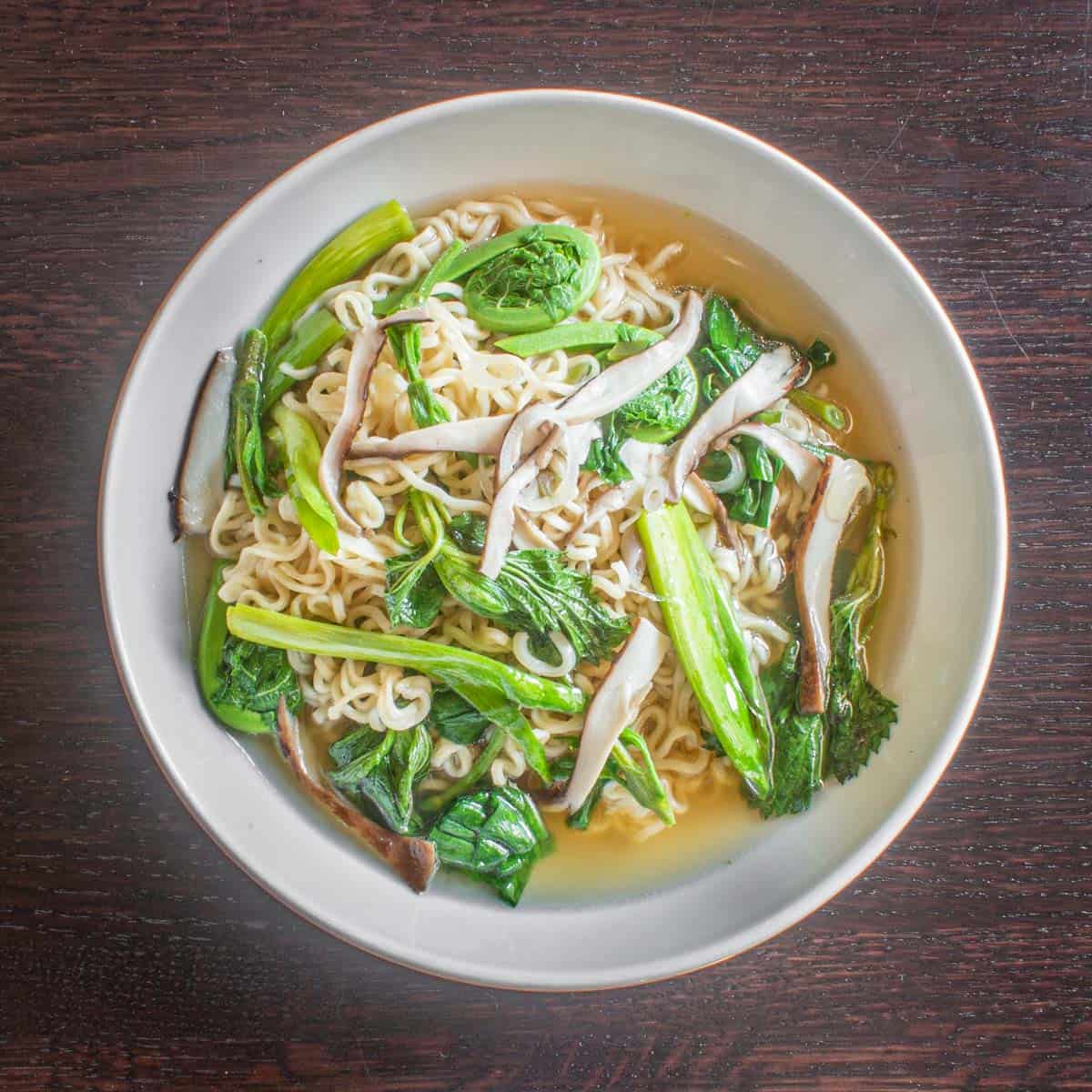
Dryad Saddle Pickles
Tart, spicy mushroom pickles with dill and jalapeno. Add them to soup and sandwiches. You can also use my Wild Mushroom Conserve (Pickled Mushrooms).
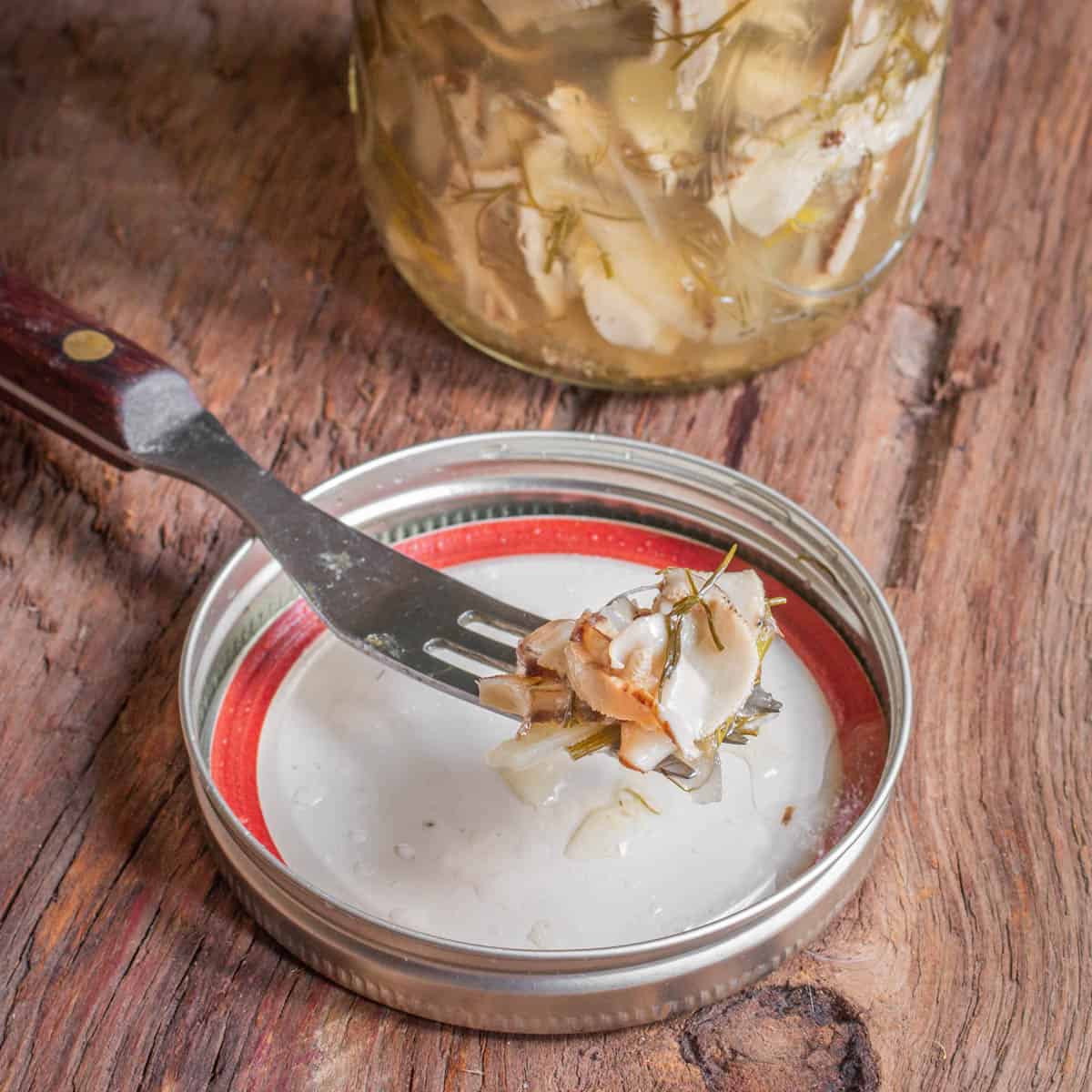
Pheasant Back Fermented Shoyu
An advanced recipe, this is a fermented soy sauce substitute made with koji rice.
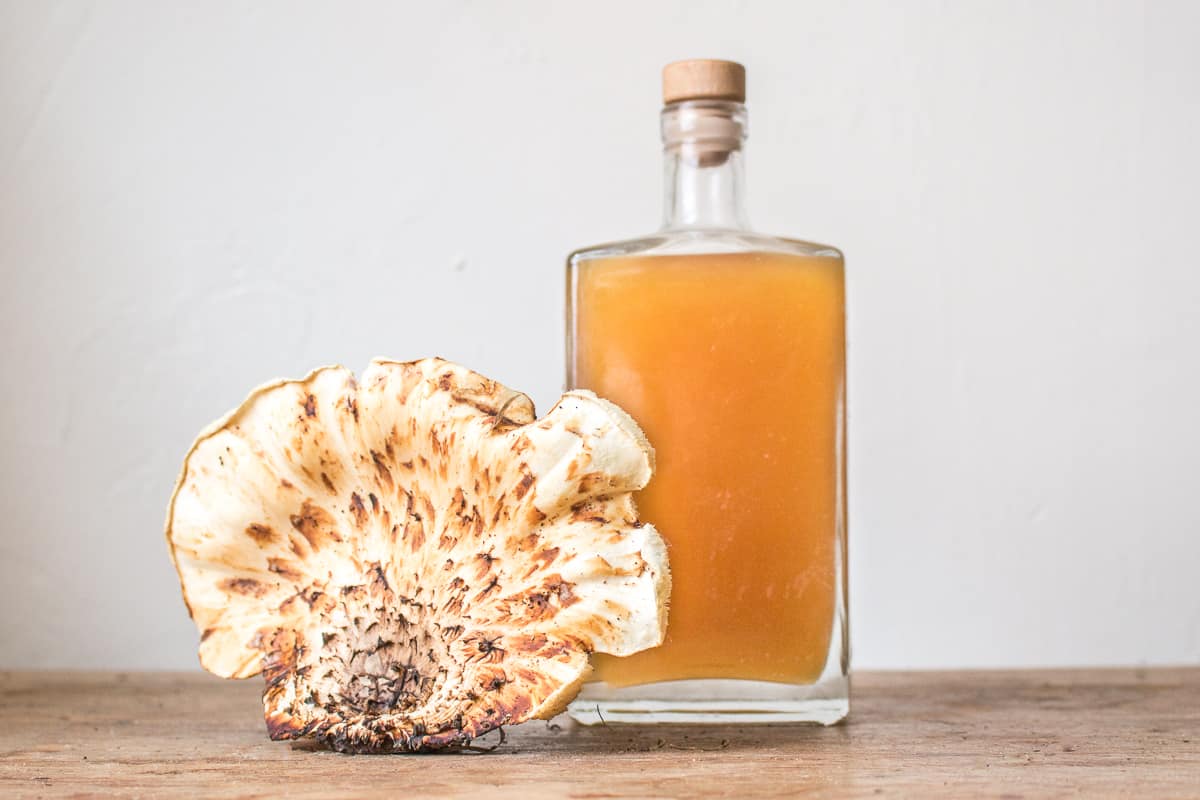

Mariele McBride
Hi, just read your information on Dryad Saddle. I have been foraging with my mother since I was a child in Germany. I found Dryad Saddle a number of years ago on a walk with a friend and researched them to find out if they are edible. She continues to find them and shares with me the bounty. However they are almost always too old. So appreciative of having an outlet for mature specimen. The idea of blending them with water/stock?, adding flour and making pancakes is particularly intriguing. I presume you could also freeze the blended mixture and then add the starch later when you want to use them. I greatly appreciate mushroom powder and use it every day on my eggs or anything I can put it on. I have done this for years - before it became an "in" thing and popular. Makes total sense, delicious and healthy. A dedicated coffee grinder is a good thing. Thank you for your info.
Alan Bergo
Thanks Mariele
Kathleen
Wow, Chef Bergo! I loved Lucia's, you're lucky to have gotten in on that in my opinion. I worked at Café Brenda, and one of the things I admired about the way that kitchen ran was that they didn't feel pressured to serve something that was not yet ripe just because it was on the menu. We let fruits and vegs rest at room temp to achieve their fullest flavor.
I have been a forager since I was a teen, One summer I worked under Chef Bruno Tanner at the White Bear Yacht Club. I brought him a cottage cheese container of morels one day. I told him that they were for him, and not for the restaurant. He peered into the container, then snapped the lid closed and looked at me-- "Do you know what these ARE?!" he demanded. I laughed because of course I knew what they were. He was a grouchy kind of guy, but I never saw them on the menu or for a staff meal, so I assume he enjoyed them himself.
I wanted to comment on the pheasant backs- I slice them about 3/8" thick and dip them in egg, then seasoned flour and deep fry them. I treat them like Buffalo Wings! It's my favorite preparation for these under-appreciated 'shrooms.
Alan Bergo
Thanks Kathleen. I worked for a country club chef who would've said the same thing 🙂
reyhan
thanks alot of information goodjobs
Alan Bergo
Thank you. This post is quite old and lots of work has gone into it.
Tim Kramer
I just found a whole bunch of these. They are tender. Can I keep them for 24 hours before eating?
Alan Bergo
Absolutely. The beauty of fresh mushrooms is that they're so fresh. This means the shelf life is incredible compared to store-bought. Make sure they're clean, then put them in a zip-loc bag with a paper towel, or some fresh, clean greens (a chef trick). They will keep for at the very least 4-5 days, and up to a week or more depending on how quickly you cooled them down and the age of the mushroom.
Trish
My husband actually likes his super tender so we peeled ours when we got home, sliced them into fries, and froze them immediately.
Justin
What do they actually taste like
Alan Bergo
As I mention it's a combination of mushroom and cucumber or melon rind. I love it. Some don't.
Justin
How do the pheasant back mushrooms taste I ain't never ate one before
Kim G
I just made these for the first time tonight and my goodness they’re amazing!! Thanks for sharing!
Steven Hester
I only pick very young ones while morel hunting. If it's over 8 inches forget it. If it's 3 to 4 inches it goes in my belly.
Simple rule as I'm out for the morels mainly. Get em if they're good.
Cdouble u
I cut the stems off and only eat/keep what I can break in half easily in my hands. If you bend it and it doesn't break its too old. Fried in salt and butter.
Quint
If the pheasant back is soft and flexible and the underside is smooth with doesn’t have dimples yet, I find them very tasty and tender.
Trisha's Tenacious Table
Good info! Last year I took the ones too touch and chopped them into small pieces, dehydrated them and then ground them to a powder, mixed salt in and made my own homemade mushroom salt!
Dr. Tarek Fakhuri
A very informative piece on a variety of mushroom that is so often overlooked!
We’re all familiar with the grocery store staple, the button mushroom. And those who forage for mushrooms in the wild will know about morels and maybe even reishi mushrooms but this is the one people should be talking about.
Thank you for shedding light on it!
G. L. B.
This was extremely helpful! I found a dryad’s saddle, brought it home, debugged it (should have been a clue), cut it very thin, and gently fried it with butter, olive oil, garlic, and onions. Smelled delicious but was chewy and disgusting. Now I’ll know how to spot an old one! Thanks!
Alan Bergo
Live and learn with these. You'll get a good one next time!
Ish
I have discovered how to eat even the most rubbery Pheasant's back. Simply chop it up and throw it in your blender with a little water, stock, broth, white wine or whatever flavorful liquid. Start with a small amount and add more as needed, just enough to puree your mushrooms. Next add your favorite mix of flours, again start slowly, you need just enough to get a thick batter. Add some salt and seasonings appropriate to the meal you are having (this makes a great falafel). You can deep fry or pan fry these and they will be tender and moist or add a little oil to your batter and bake your patties in the oven. I discovered this trick because I thought the rubbery texture would create a nice vegan pepperoni and I was actually disappointed because the chewy tough bite was gone and this happened to all the mushrooms I've tried this with so it works for any tough woody, rubbery mushrooms.
I came here to see if I should let the one I found I my backyard this morning grow but I now plan to harvest it after posting this.
Happy hunting!
Alan Bergo
Ish, that's a fantastic idea. I'll try to remember to grab some older ones next time I see them. Thank you!